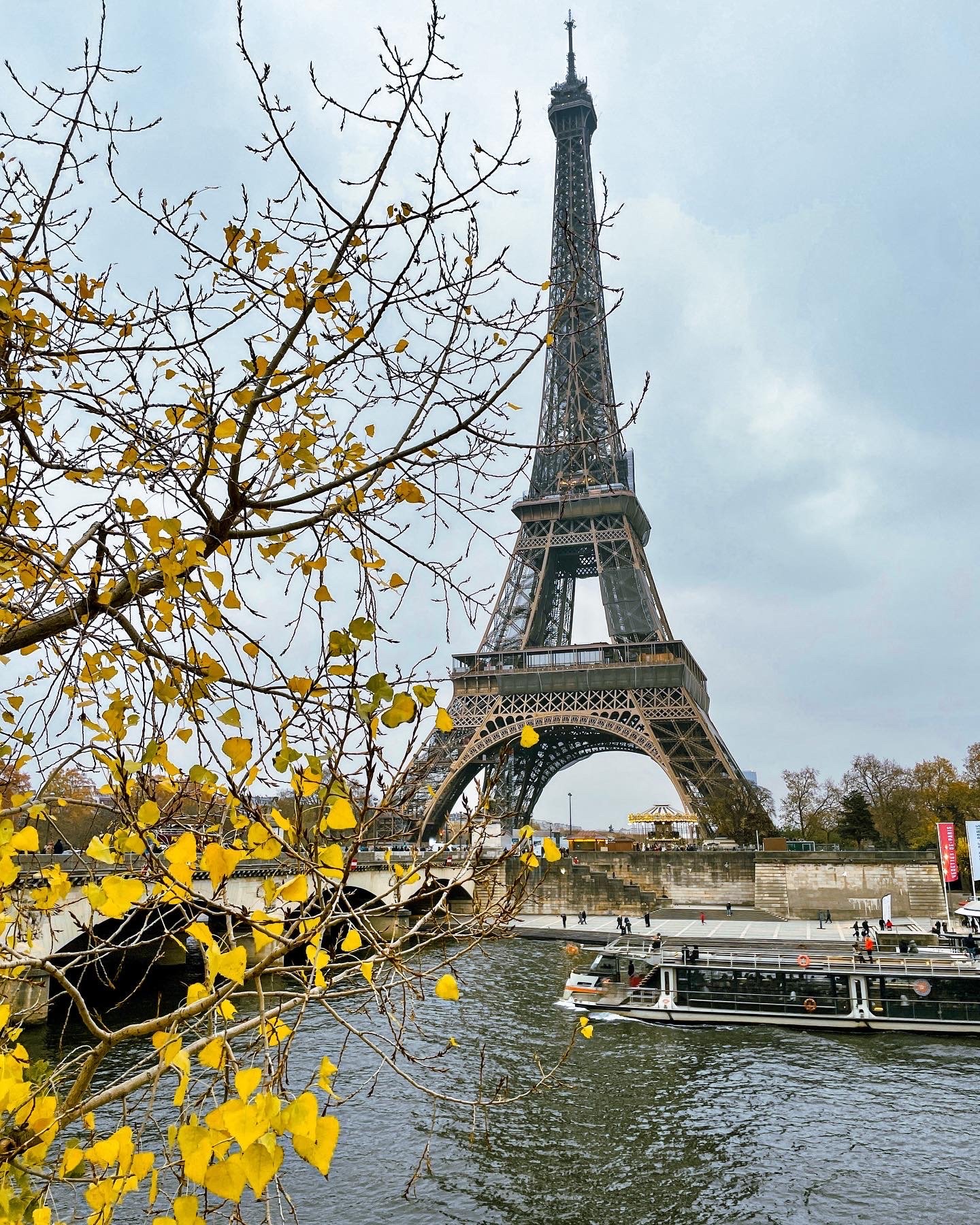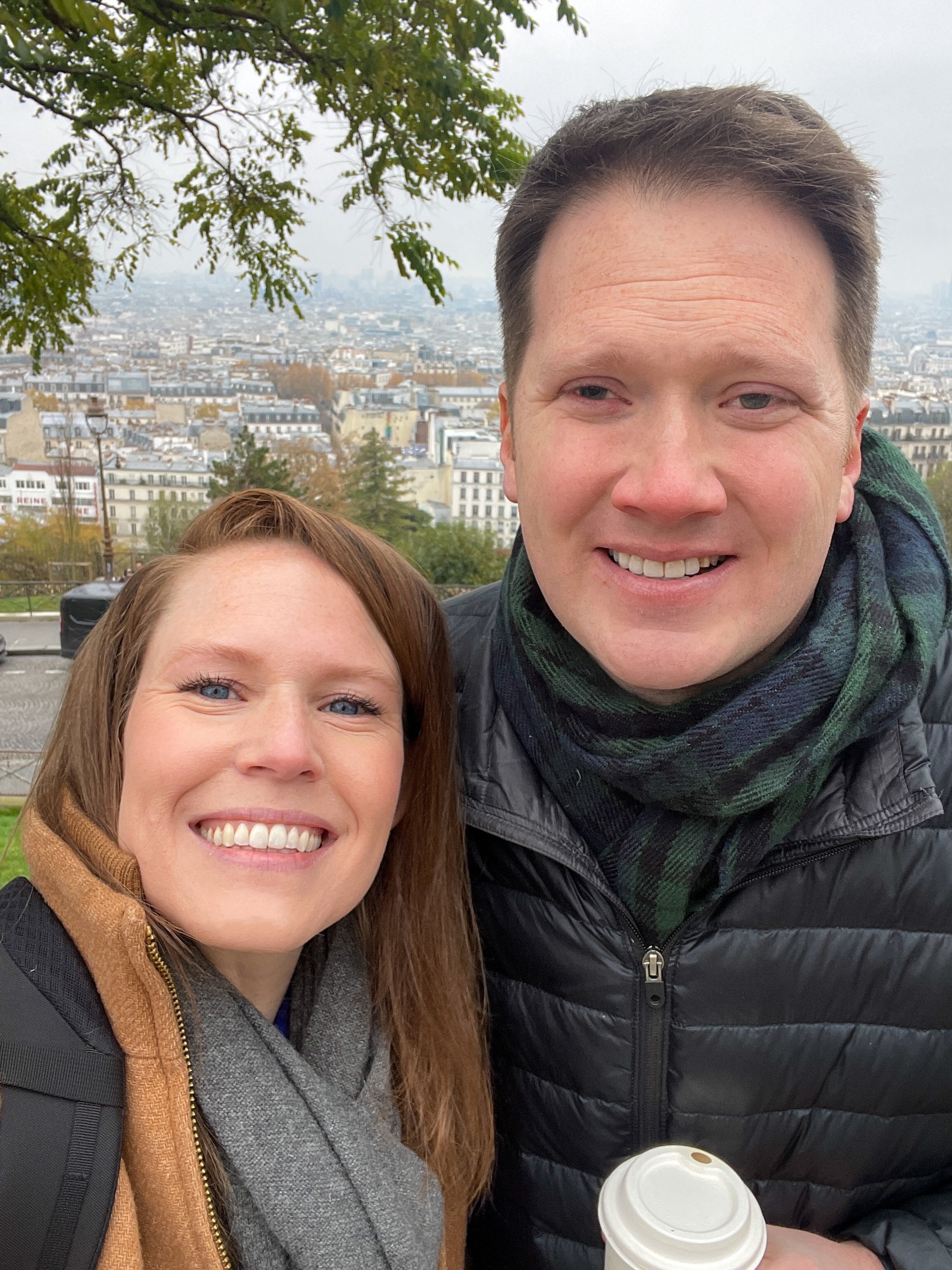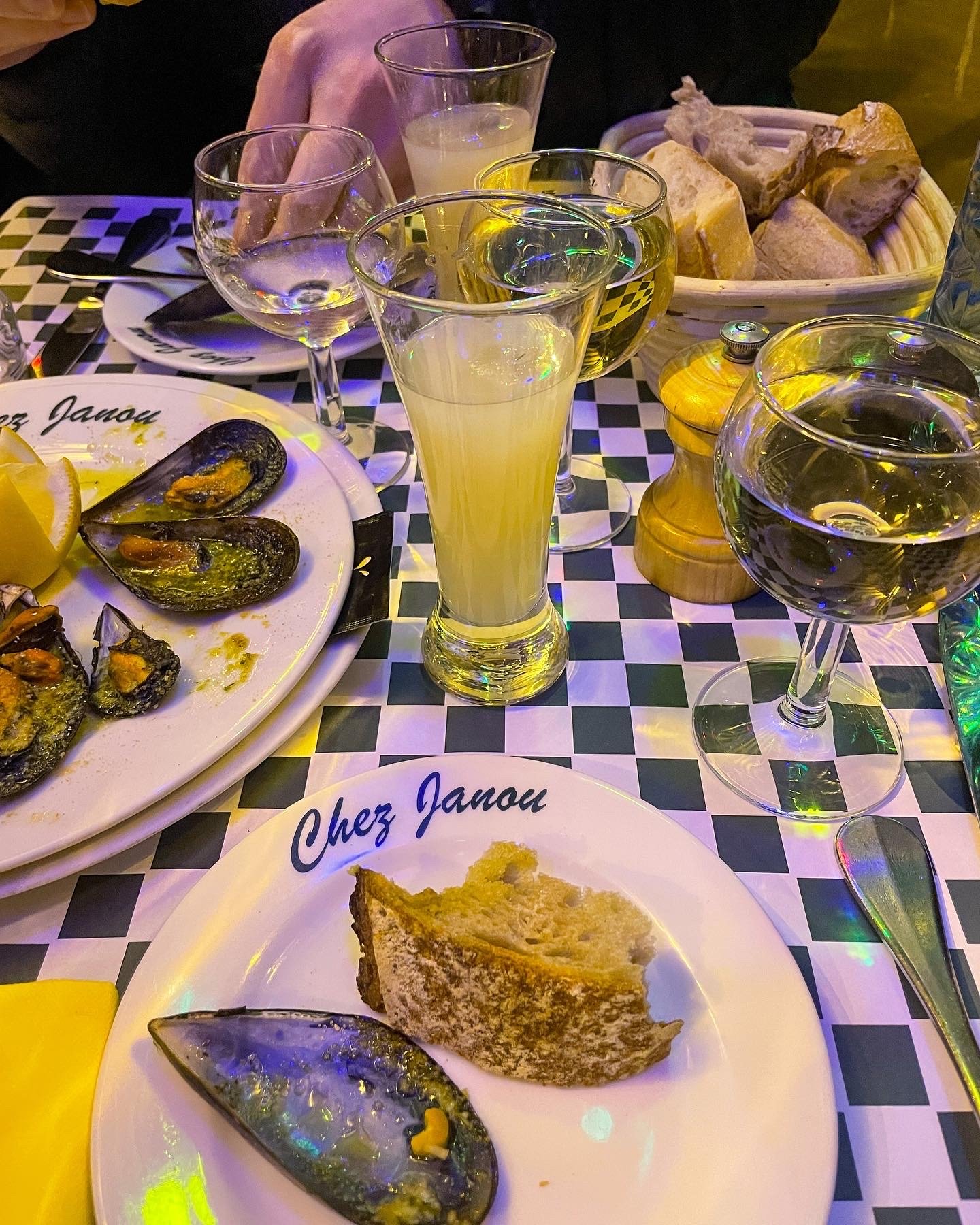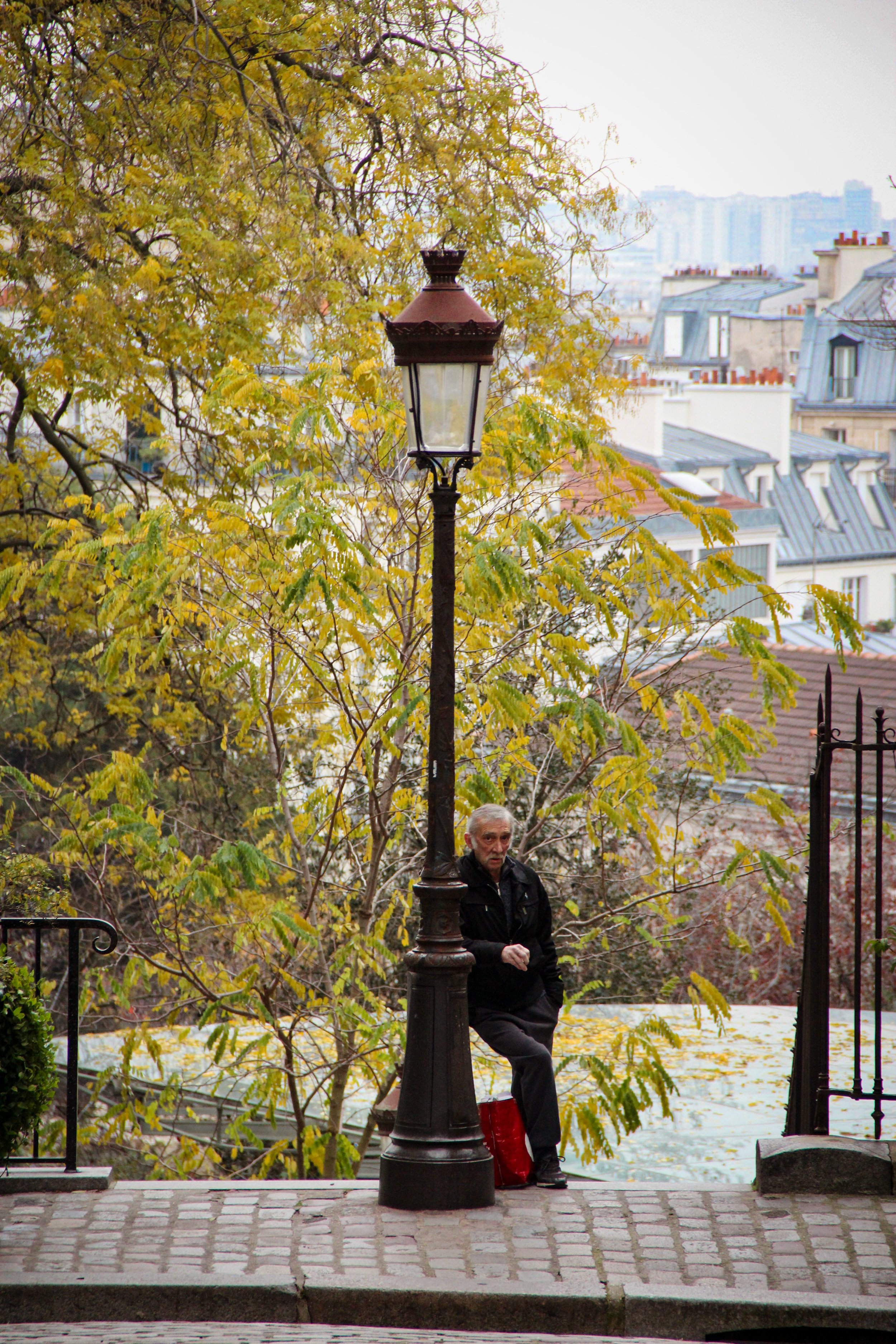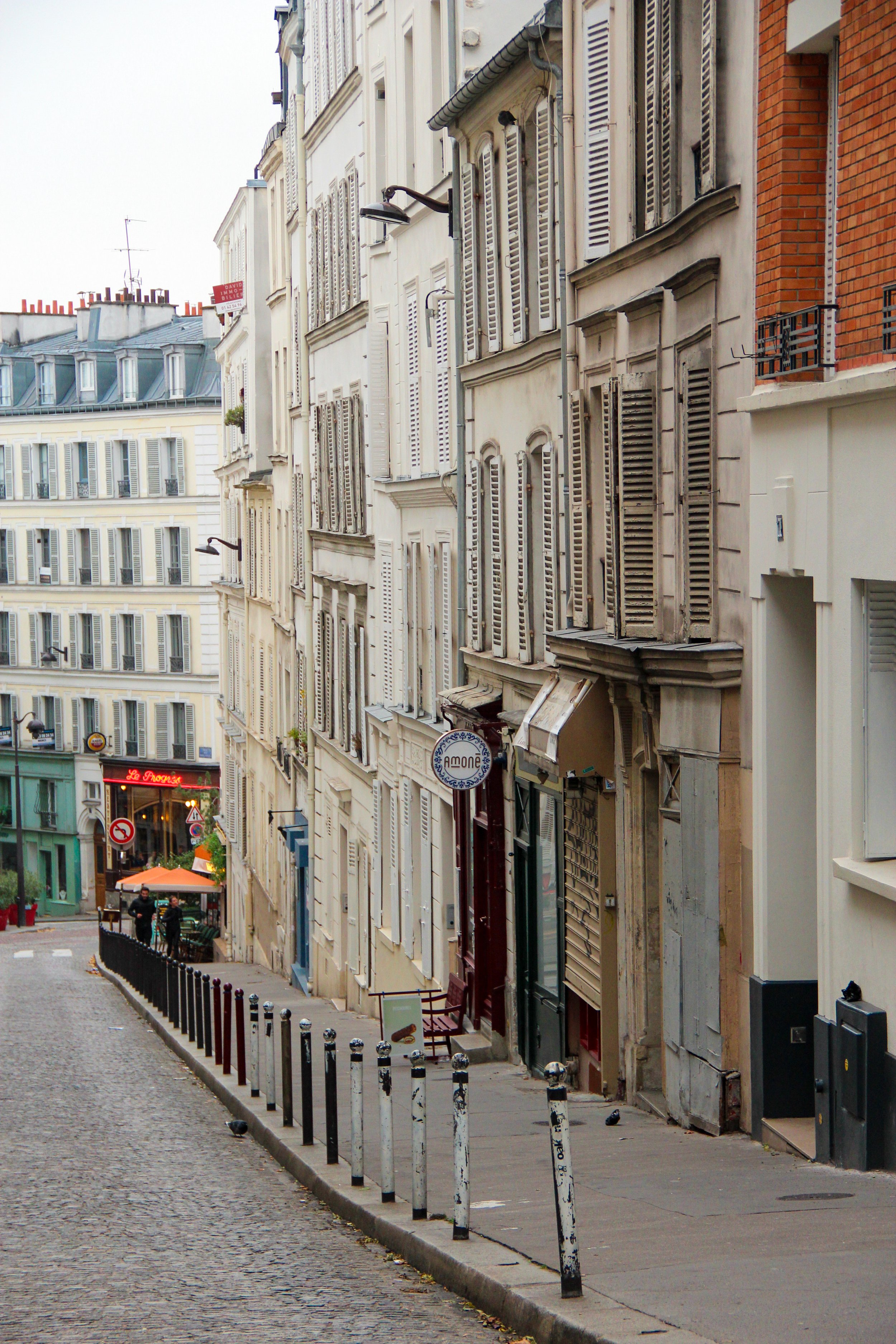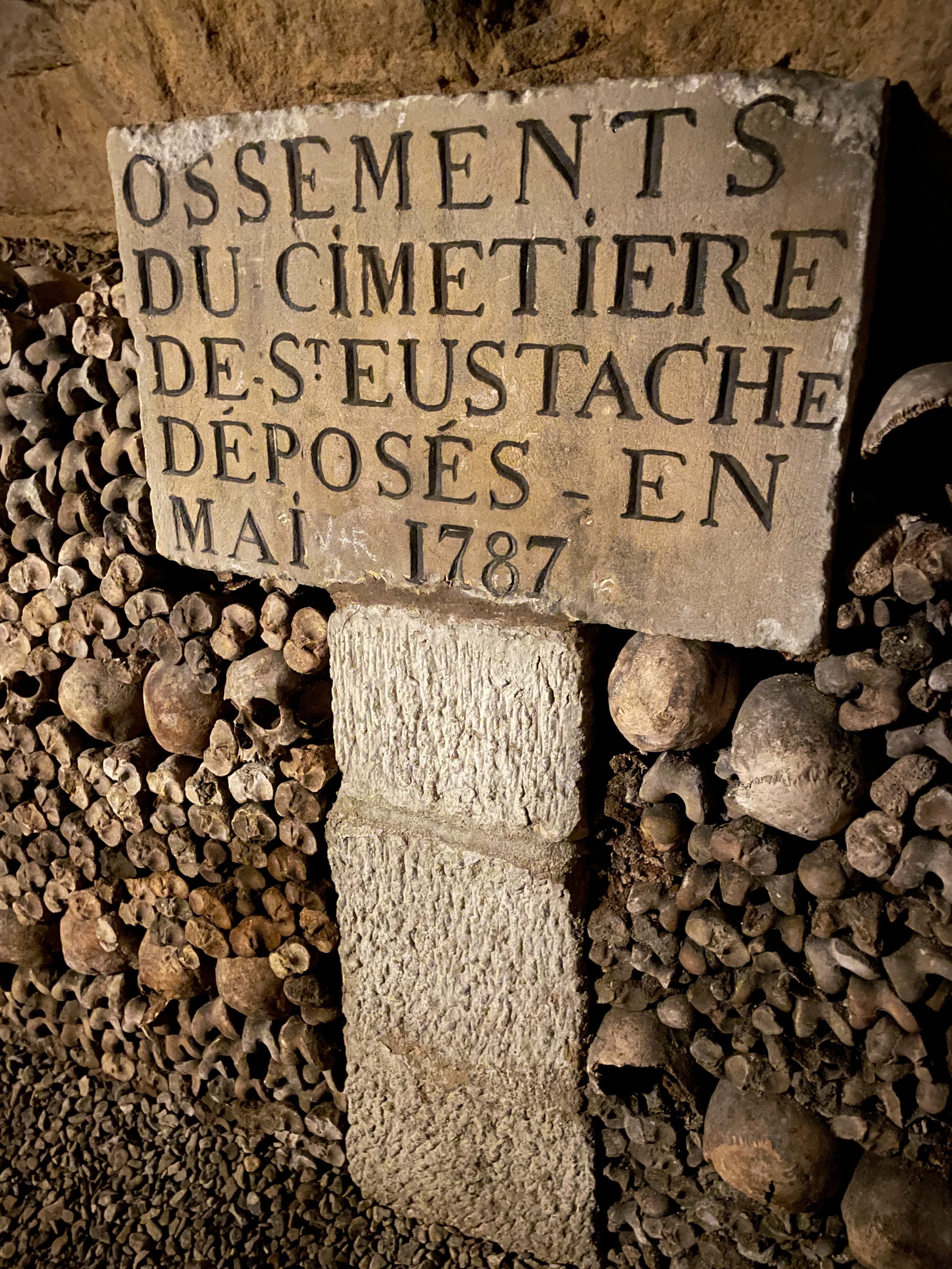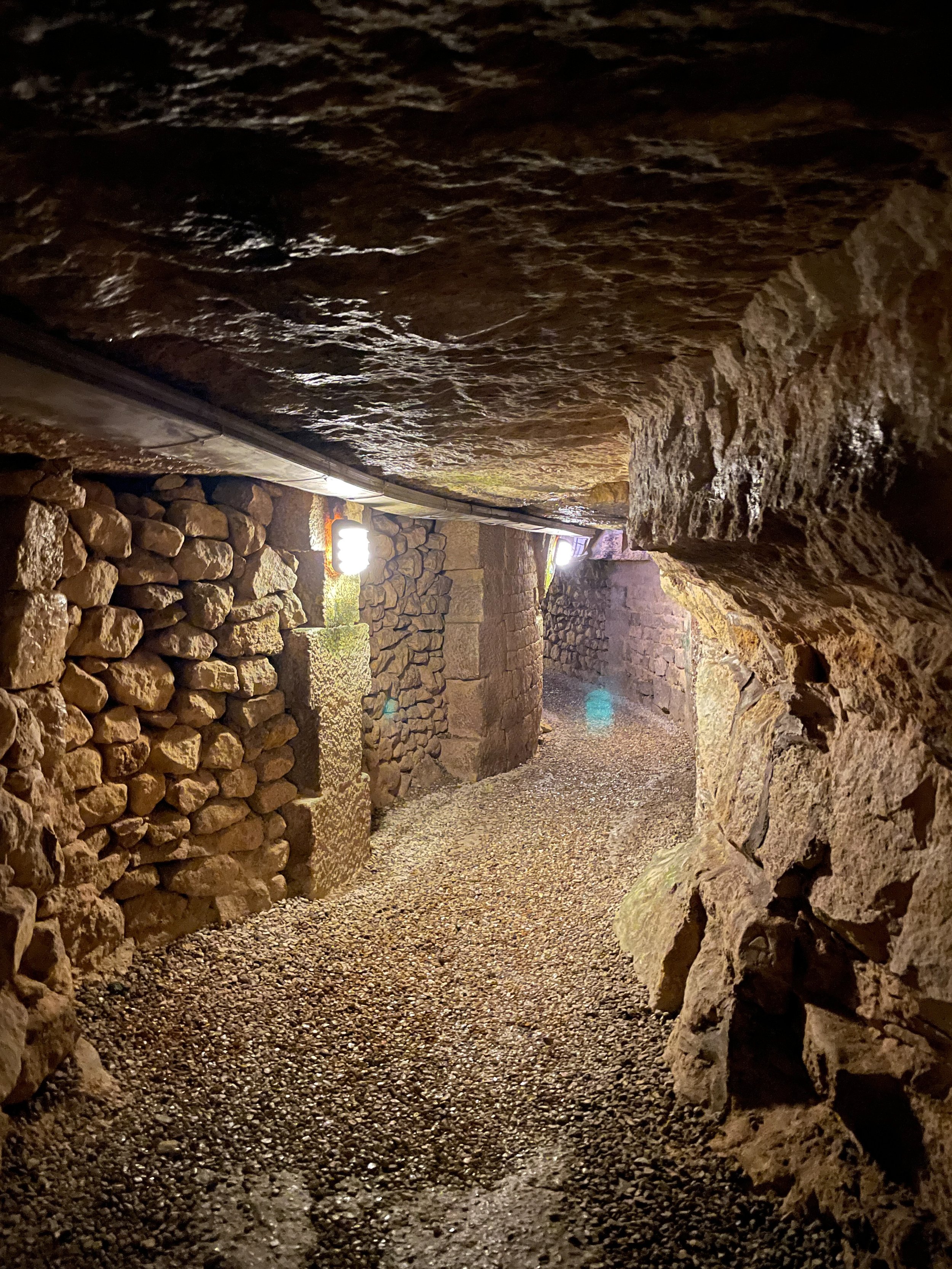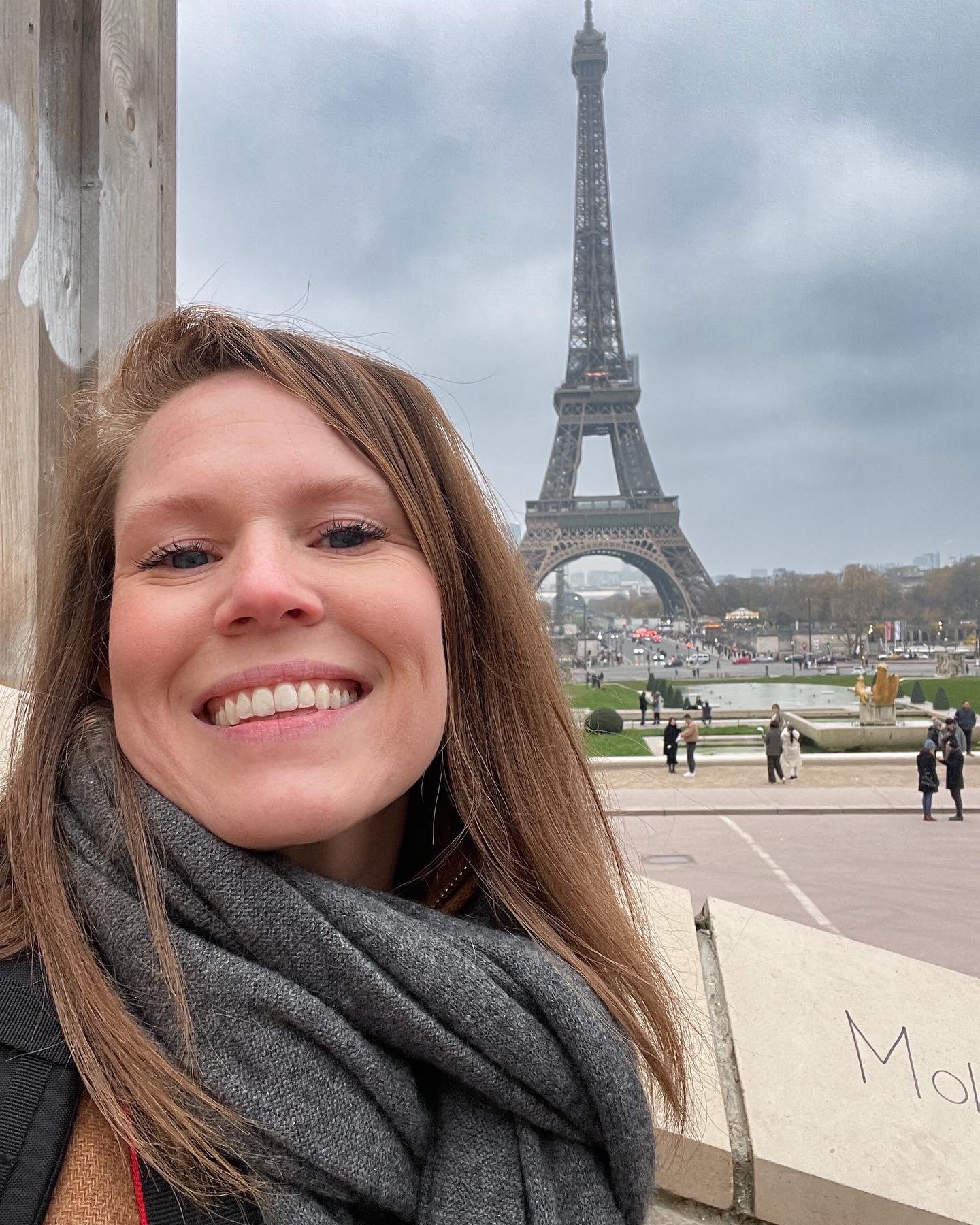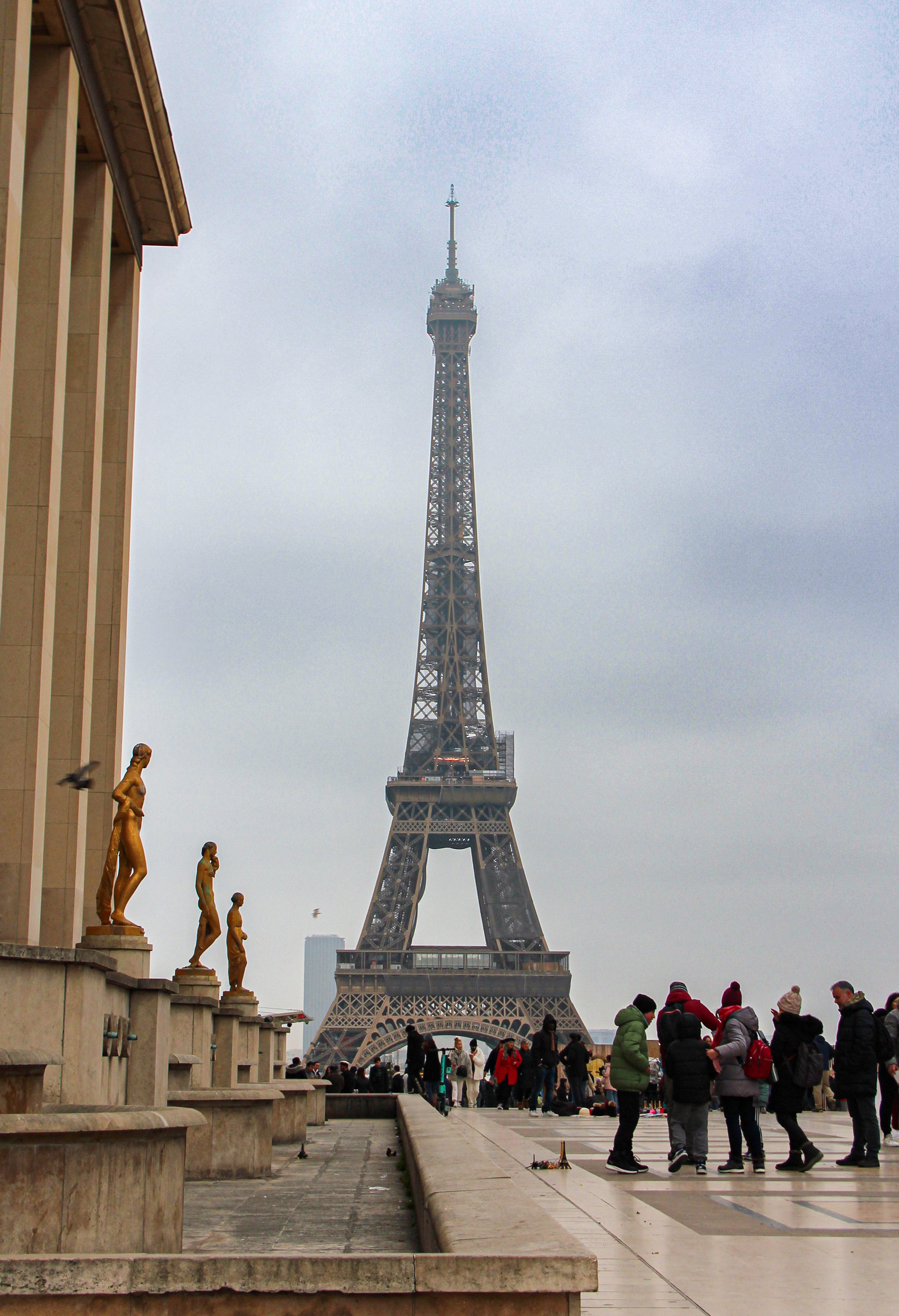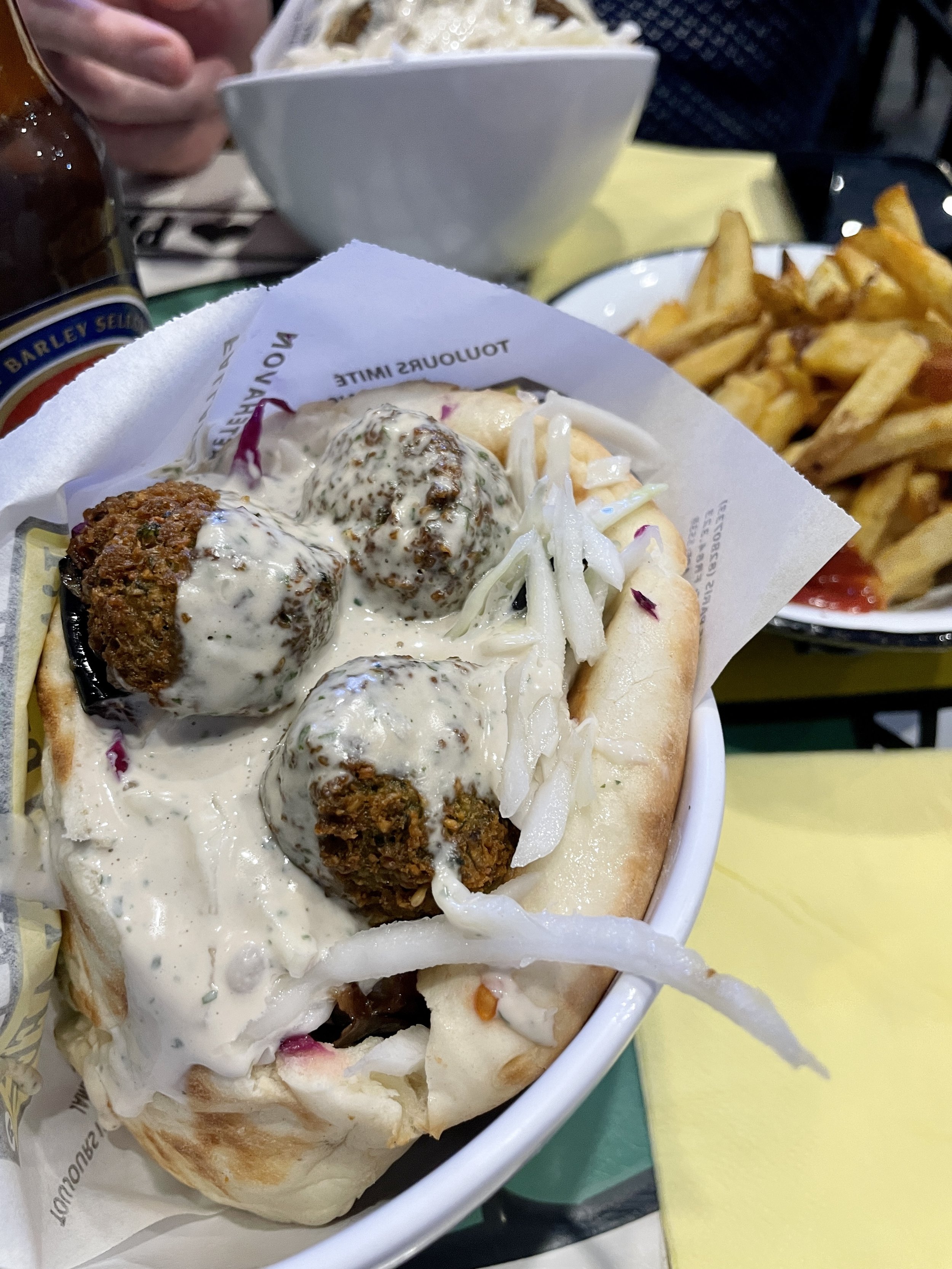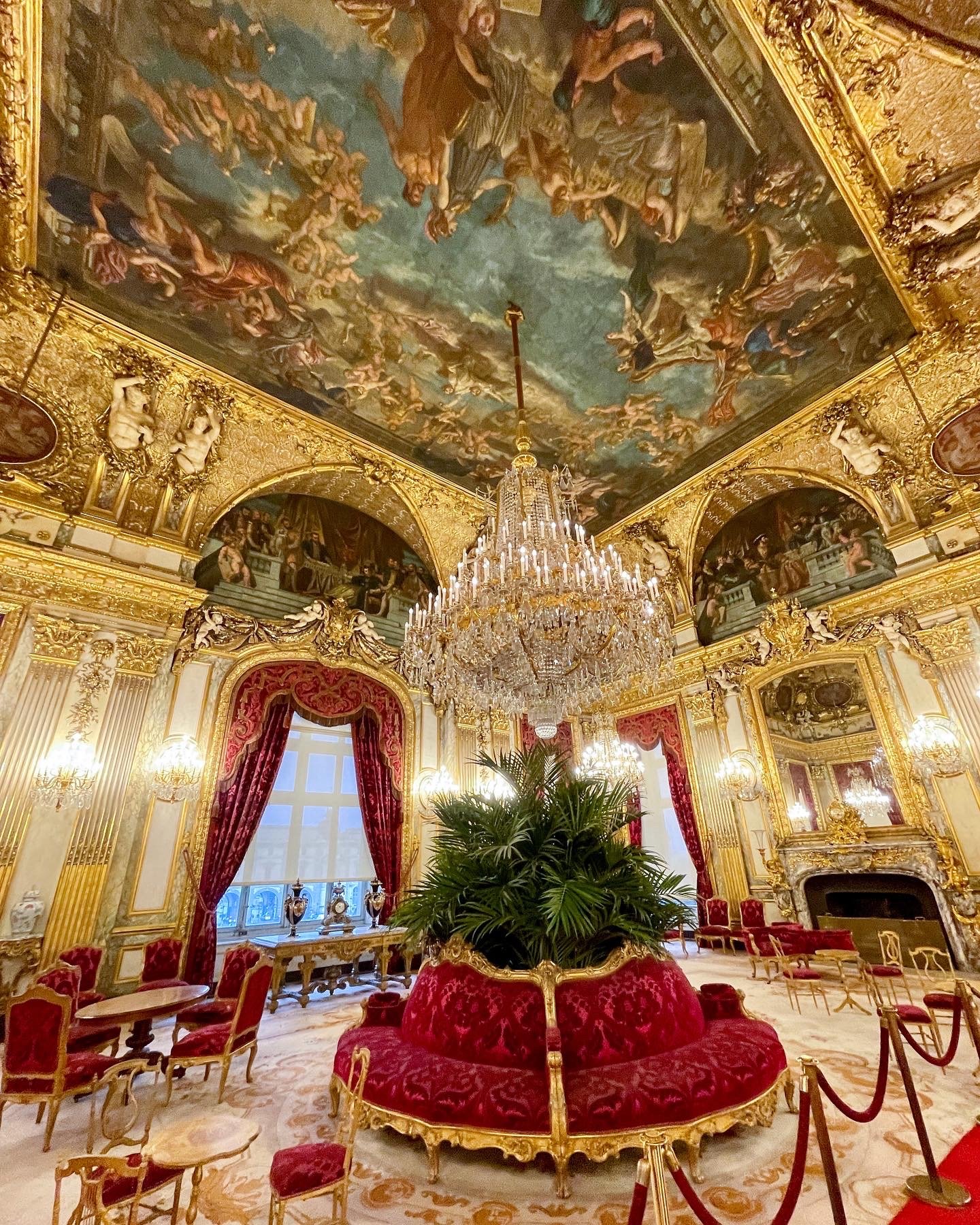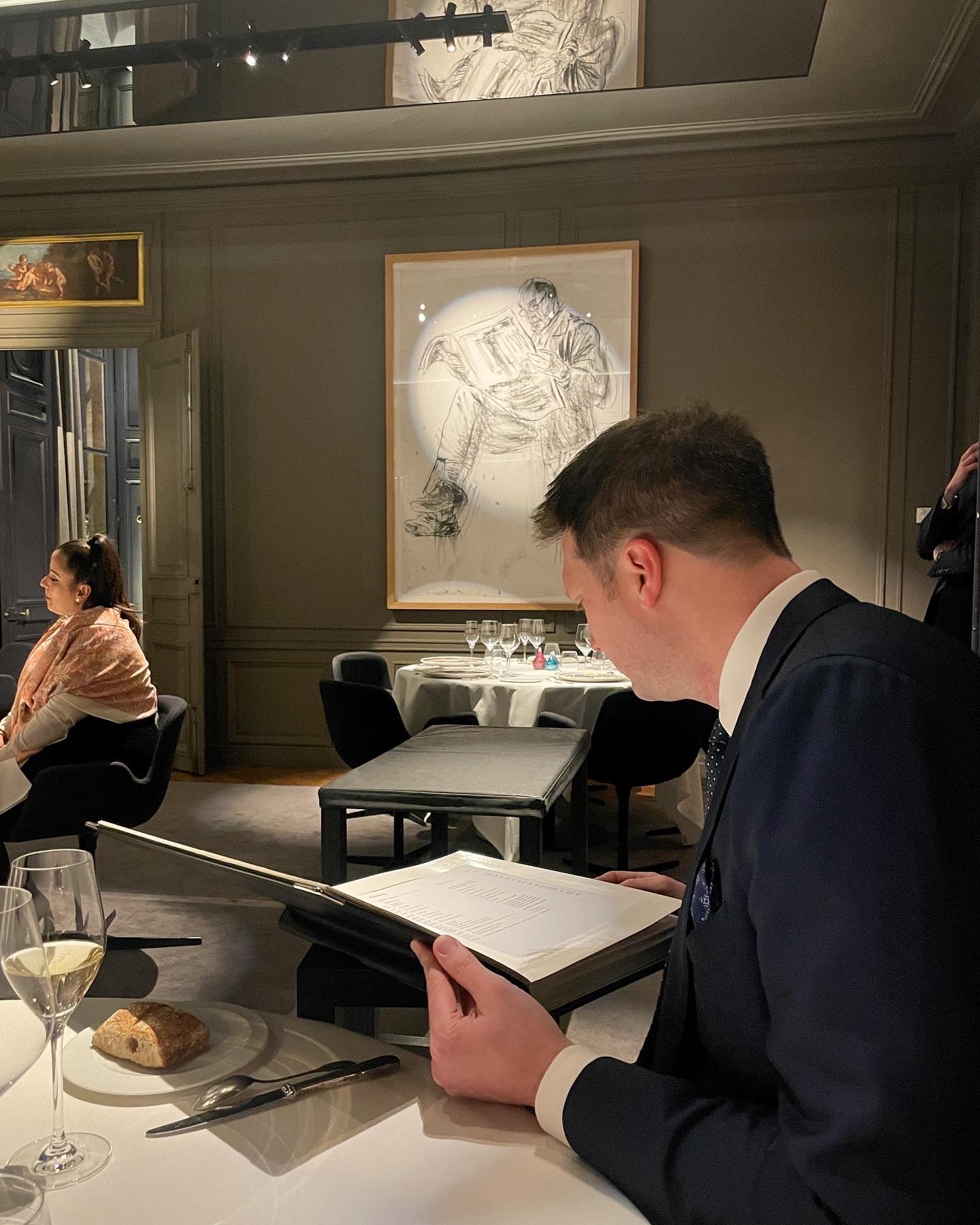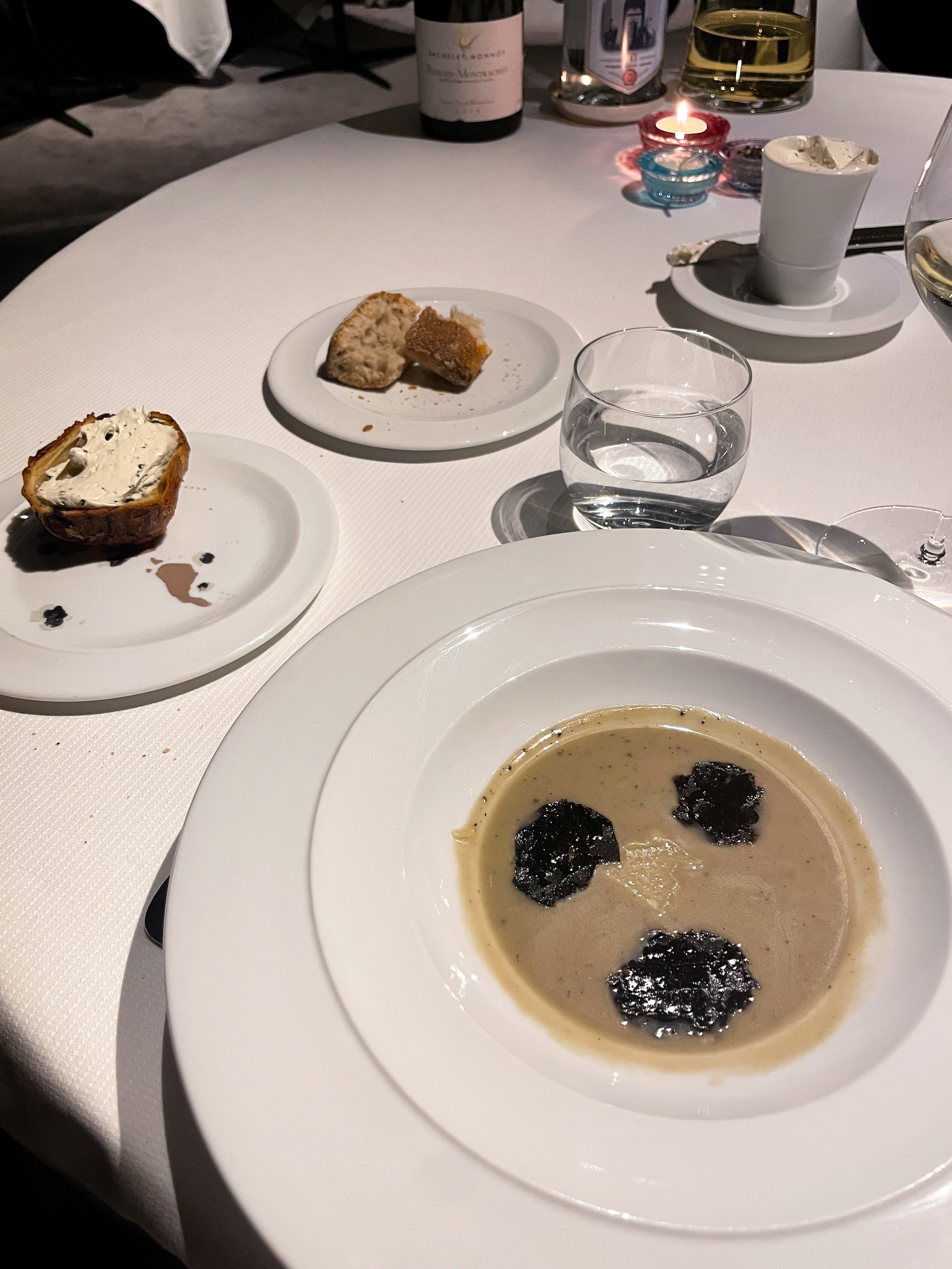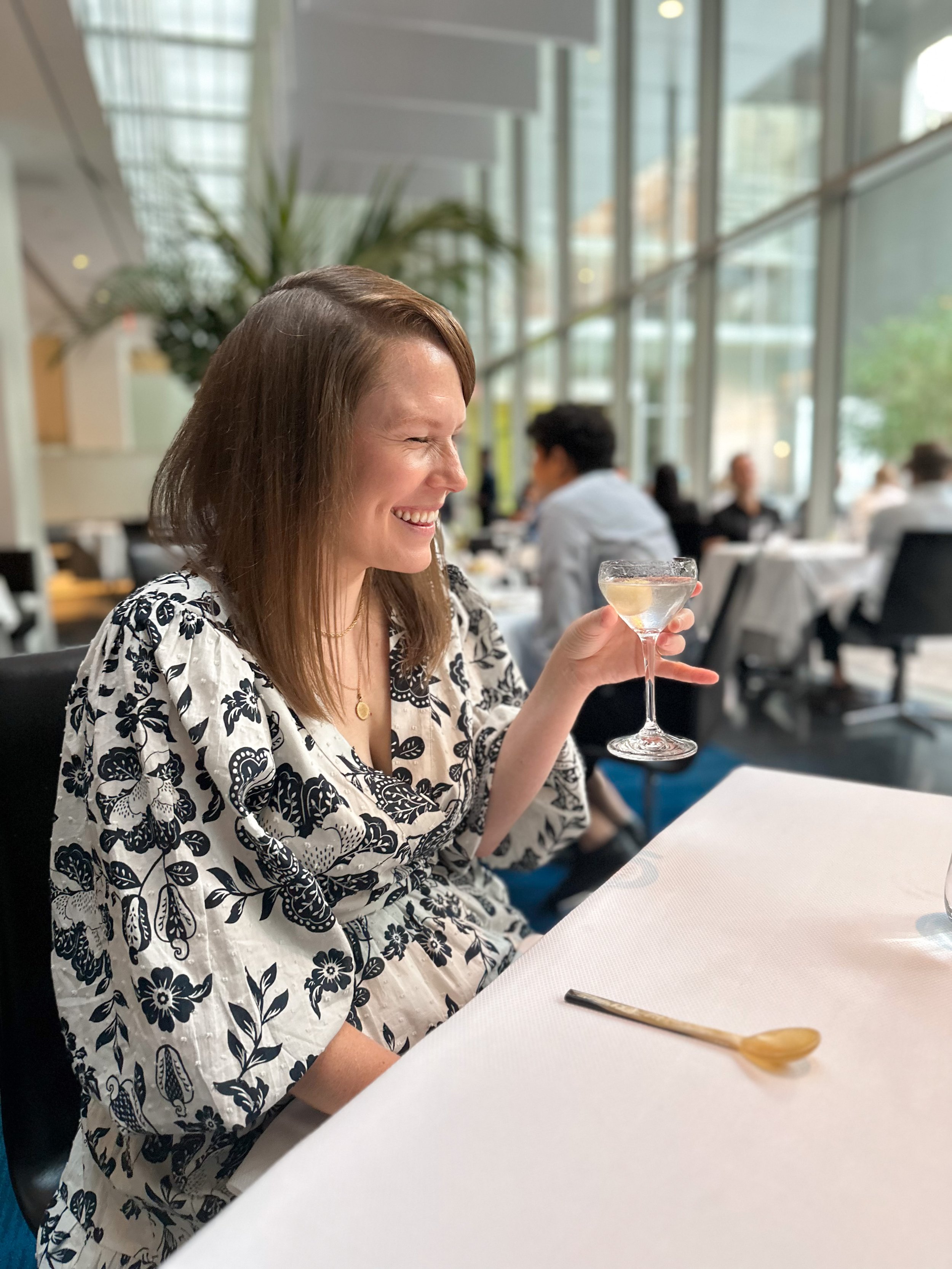I can’t believe it took me so long to visit Paris! As a teen, I was deeply obsessed with the French-centric movie, Moulin Rouge. I even named my hefty pug, Satine, after the main character. But with a multi-year pandemic, the need for a budget, and the birth of my first child, our original Paris plans were much delayed.
In December 2023, those baguette and cheese-filled dreams finally became a reality. My husband and I planned a three-night stay in Paris. Our goal as first timer’s in the city? See some of the hits, check out a few museums, eat like a local, and enjoy at least one fancy meal.
Brief Overview
Friday: Fly out of U.S.
Saturday (Day 1): Land at 8 am: Le Marais
Sunday (Day 2): Montmartre, Catacombs of Paris, Eiffel Tower, eat cheap
Monday (Day 3): Louvre, Notre Dame, wandering, fancy meal
Tuesday: Fly out at noon
What to Pack for Paris
Prepay for a digital eSIM so you can use your phone in Paris and not have to manually switch out the SIM card. We bought the 8GP Orange eSIM for our 10-day trip. I used my internet pretty frequently for maps and social media (not much streaming). I had about 1 GB leftover—it was a perfect fit for me!
Don’t forget the usual suspects, like an outlet converter, a small umbrella, and a sleep mask for the plane.
I purchased this sleeping contraption for the long redeye flight to replace my inflatable neck pillow. It definitely helped keep my head from rolling all over the place, and it was easy to fold up. Still, sleeping on a plane is very difficult for me!
See my full European packing list for more.
Hour-By-Hour Paris Itinerary
Here’s my copy-and-pasted itinerary for Paris, down to the hour. I’m very aware not everyone travels in such a structured way—but I’ve got limited time abroad and thus, must organize! I’ve also included notes with feedback, changes to our plans, etc. All reservations listed below were made before we left the United States. For popular attractions like the Eiffel Tower and the Catacombs of Paris, consider booking at least a month in advance.
Saturday (Day One)
8:00 am: Land in Paris
10:00 am: Drop off luggage at Paris France Hotel
10:30 am: Walk around Le Marais
1:00 pm: Lunch - Breizh Café for Crepes - Reservation made.
3:00 pm: Orsay tickets 3:00pm Timed entry - Reservation made.
6 pm: Head back to the hotel, check in if we have not, change clothes.
7pm: Dinner - Le Colimaçon - Reservation made.
Notes: Merde! Somewhere between checking in the hotel and lunch, I started to feel more than jet lag. By the time my food arrived at Breizh Café, I could hardly touch the delectable “La Tradition” galette (Ryan finished his crepe and my meal because it’s just that good). I don’t exactly know what happened—but I was either passed out or in the bathroom from 2 pm - 7 pm. We missed the Orsay and Le Colimaçon.
Happily, I turned a corner that evening and we made our way to Chez Janou for an incredible first dinner in Paris. Ryan’s aunt had recommended it to us, and I’m so glad it was our accidental destination. We huddled under cozy blankets in an inclosed outdoor seating area with mussels, pastis sippers, and an endless chocolate dessert. The waiter gave us a free shot at the end of the meal. He chatted with us about living in Paris and asked about life in New York. Then we walked the quiet, quintessential streets of Le Marais. It was such a lovely way to start out trip.
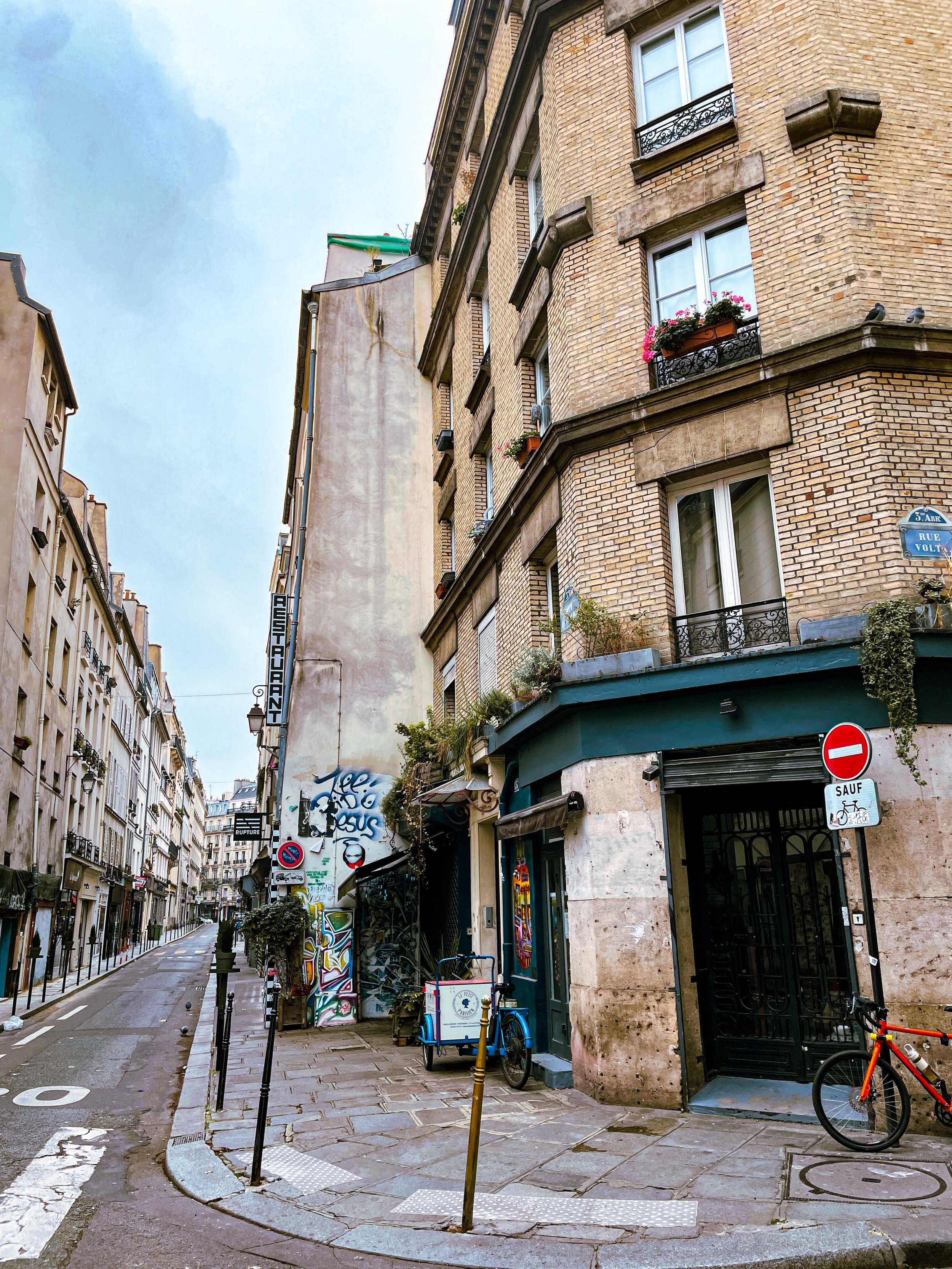
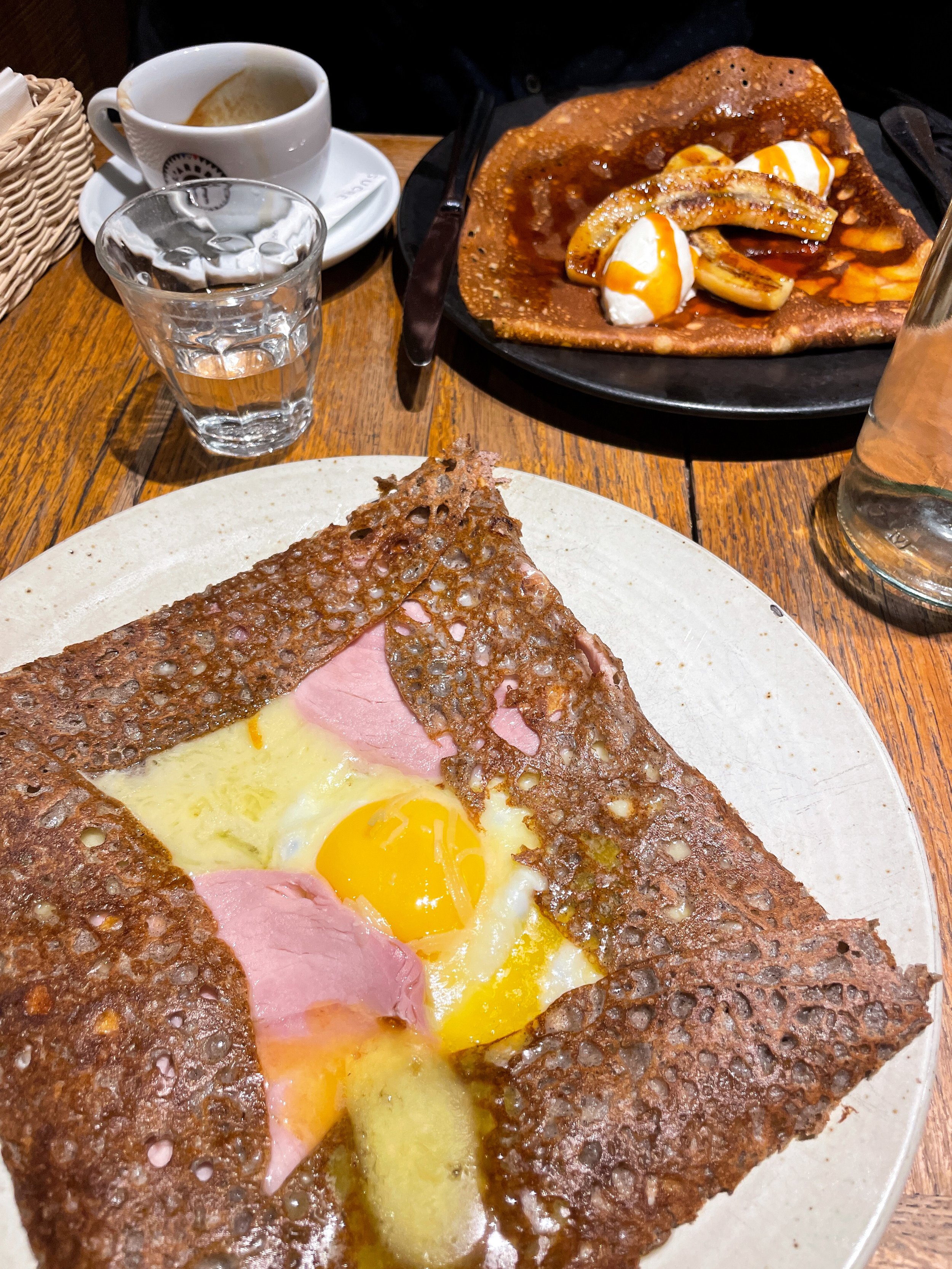
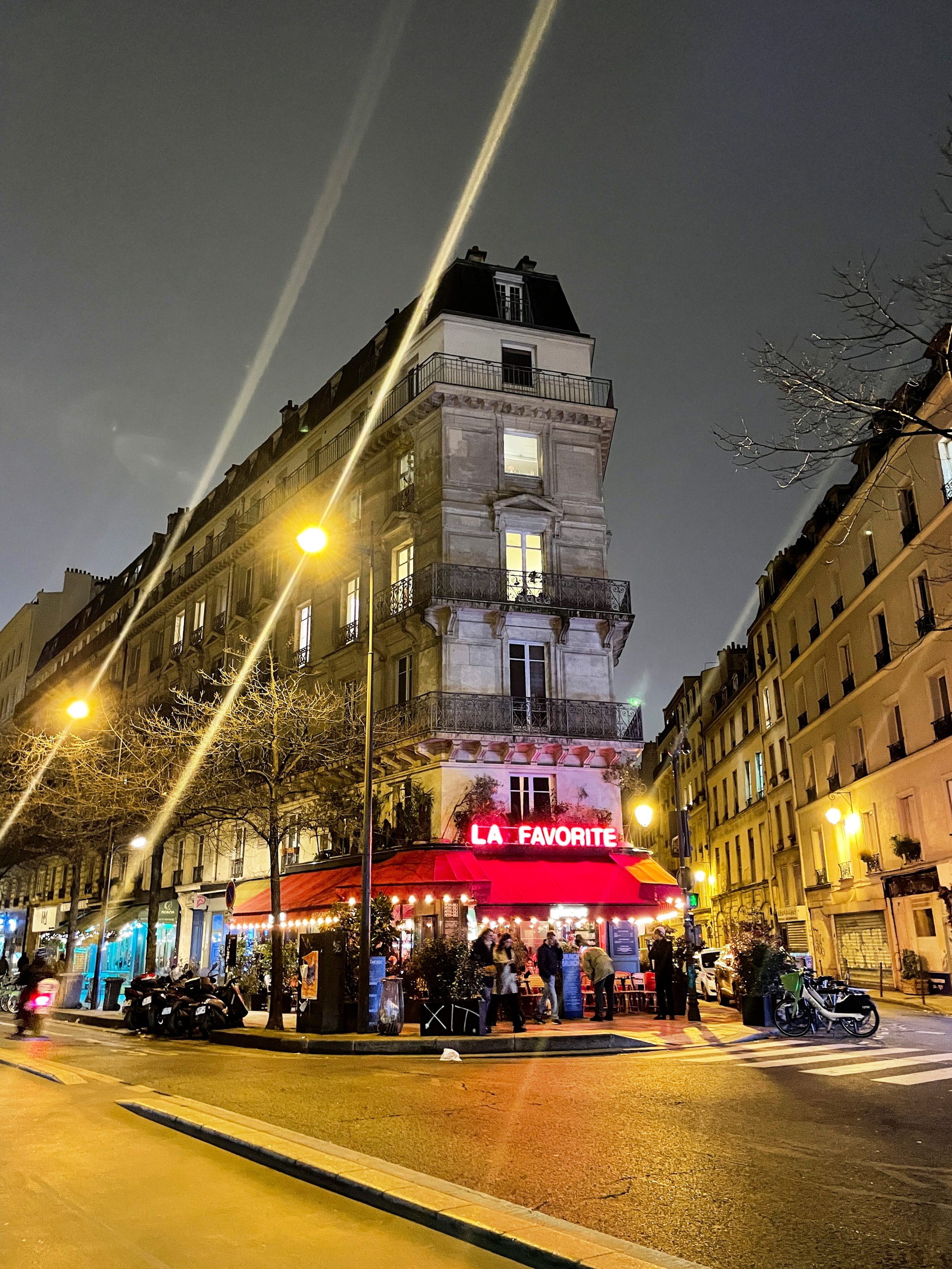
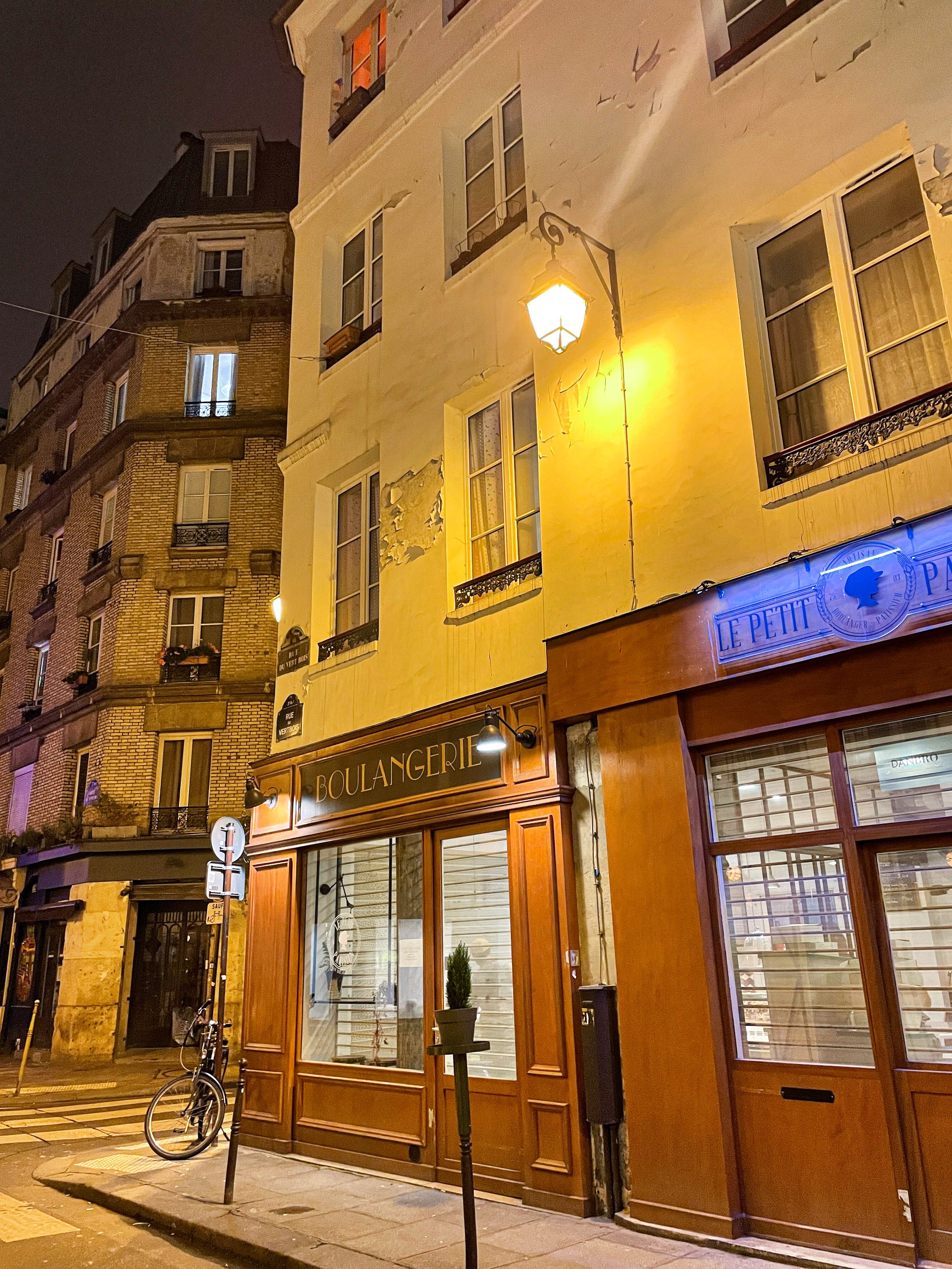
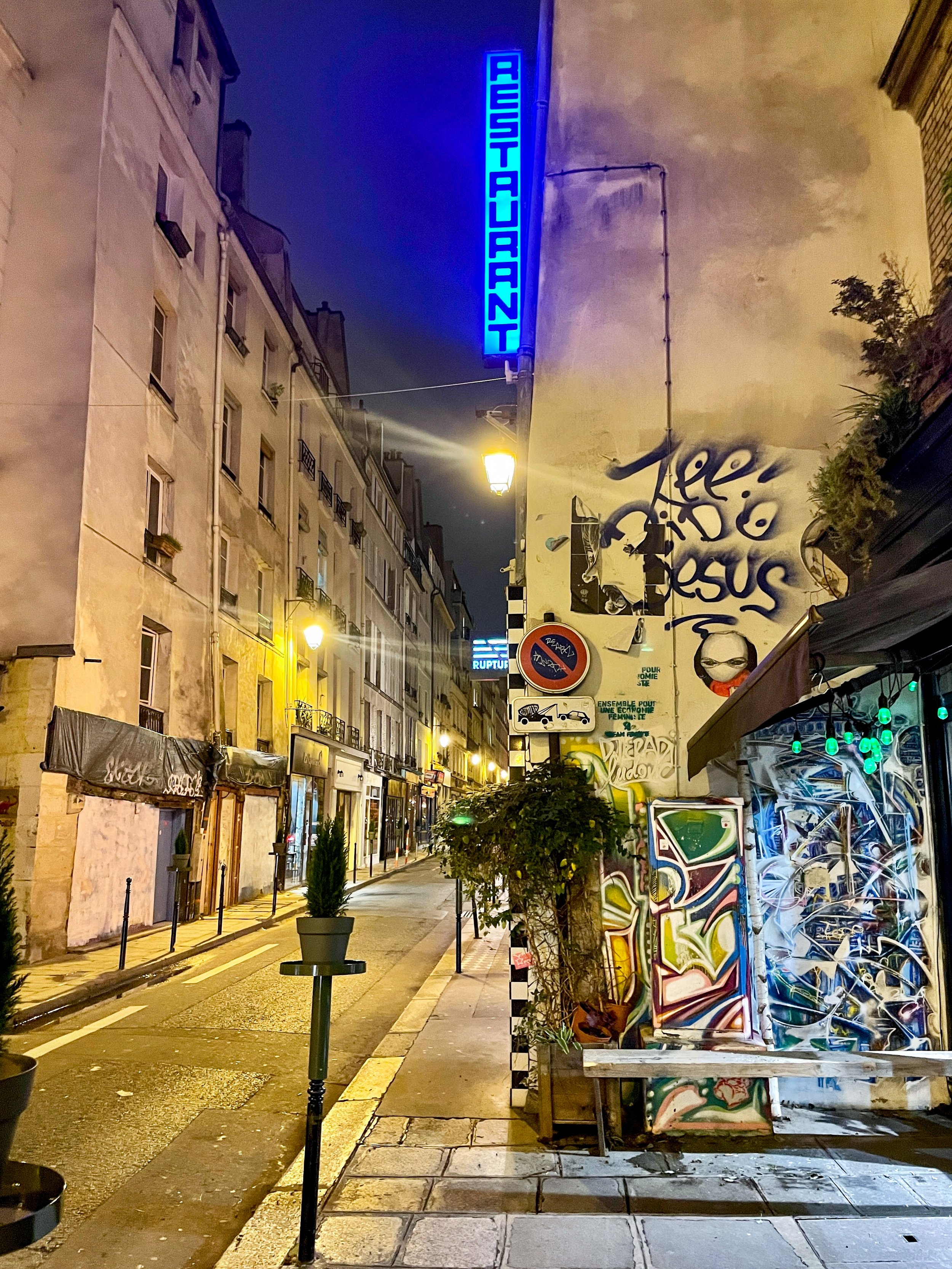
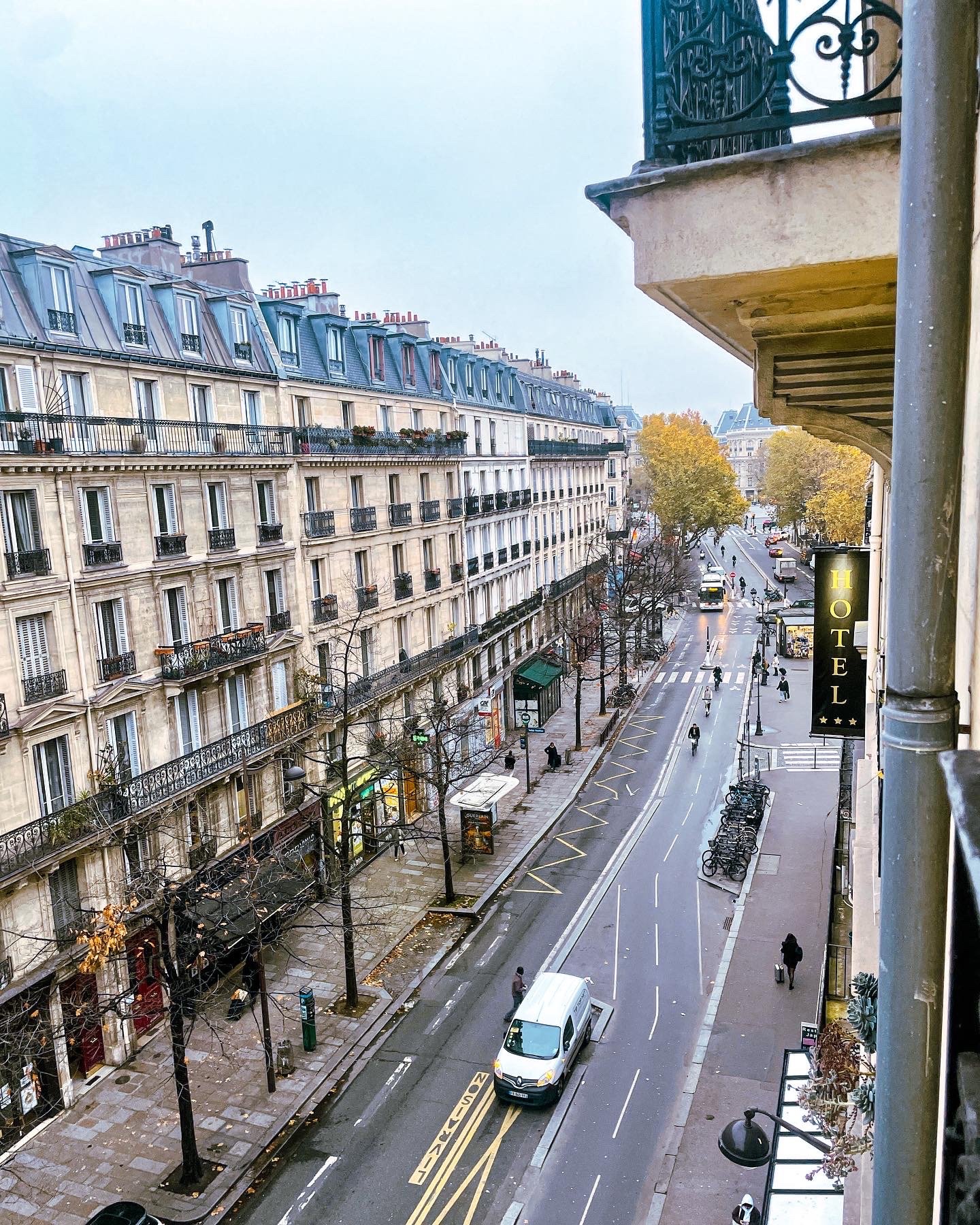
SUNDAY (Day two)
9:30 am: Out the door—cab to Montmartre (+-30min)
10:00 am: Morning in Montmartre
10:00 am: Clove Coffee Shop for breakfast
10:20 am: See the view from Sacré-Coeur as well as the inside (free)
11:00 am - Montmartre Museum / Gardens - Reservation made.
12:15 pm - Walk around Place du Tertre
12:30 pm - La Crêperie for to-go crepes. Cash only.
1:40 pm: Head to Catacombs (takes about 40 min either by train or cab from Monmartre)
2:30 pm: Catacombs timed entry. Reservation made.
3:45 pm: Head toward Eiffel Tower (Trocadero Metro stop for view)
4:15 pm: Arrive at the Trocadero Garden view area
5:15 pm: Arrive at Eiffel Tower Esplanade, get in security line. Reservation made.
5:30 pm: Eiffel Tower Timed Entry Elevator to the top.
6:45 pm: Head to dinner
7:15 pm: Dinner: L’As du Fallafel (often a line, no reservations)
8:30 pm Little Red Door (often a line, no reservations)
Montmartre
Two-sentence history: Montmartre was a rural, independent village dotted with mills (moulins) that sat atop a hill just outside of Paris until 1860, when it became the eighteenth district (arrondissement). By the end of the 19th Century, the neighborhood was filled with brothels, cabarets, and artist studios, some of which included Monet, Renoir, Degas, Toulouse-Lautrec, Suzanne Valadon, Picasso, van Gogh, and others.
Notes: There’s not much I would change about this magical morning. I highly recommend the small Musée de Montmartre if you want to learn the history of the neighborhood and walk the gardens where Renoir once painted. There was a special exhibition while we were visiting, dedicated to Fernande Olivier, one of Picasso’s first serious partners—it was fascinating to read through her diaries.
The Place du Tertre and the narrow streets at the center of Montmartre were packed when we visited; it was the only place on our trip to France where we ran into real crowds. We ended up avoiding lines and eating lunch at a hole-in-the-wall, cash-only crêperie. There were park benches outside of the restaurant. We sat and watched locals buy baguettes, tourists look at maps, and shopkeepers greet each other on the street.
Catacombs of Paris
Two-sentence history: In the 1770s, the limestone mines on the outskirts of the city were beginning to cave in, which led King Louis XVI to name a commission to investigate the Parisian underground. Around the same time, overflowing cemeteries filled the city—between these two needs, the idea of the catacombs was formed.
Notes: I really enjoyed this attraction and the history tidbits from the audioguide but if you get claustrophobic, this one is not for you. The beginning of the tour winds you through small passageways of stone—even I was a little on edge. Toward the middle of your journey, the space opens up a bit more, and there are areas for you to pause and wander. Be sure to read this page before booking your tickets, and remember that you can’t take large items underground.
Eiffel Tower
Two-sentence history: This staple of the Parisian skyline is a wrought-iron lattice structure that was constructed from 1887 to 1889 to be centerpiece of the 1889 World's Fair. It’s one of the most visited monuments in the world, and can seen by some five to six million visitors each year.
Notes: This was our least favorite part of the day. In some ways, I’m glad I’ve been up the Eiffel Tower—but it just wasn’t that enjoyable! We’d bought tickets to visit the very top. It was a cold December night, so we couldn’t see much of the city and we were freezing—which is, of course, not the Eiffel Tower’s fault. But the worst part of the experience were the incredibly disjointed lines. There was a line and security station to enter the grounds, which was fine enough. There was another line and security check to take the elevator to the first landing. Then, there was a wait for the elevator in a big room with no formal queue, a scramble to join another line to get onto a second elevator to the top—and once at the very top, you were greeted by the angry line to get back down. The top of the tower was smashed with people (and the champagne bar was closed!), so I think we stayed up there for about 15 minutes before joining the angry line down. There was no signage, so people were cutting the line—which led to me basically playing a game of whack-a-bad-tourist with my elbows for 20 minutes. The second elevator to the ground level had a 30-45 minute wait—so we walked the rest of the way down in freezing wind.
All that to say, if I could do things differently, I’d likely go during the day and perhaps only to the first or second level. Or, to save money, I’d would re-do my favorite part of our Eiffel Tower experience: See it from the Trocadero Metro stop, take pictures while walking toward it, and—if the weather were nice—stopping for some food and wine in front of the impressive structure.
Dinner and Drinks
Notes: L’As du Fallafel is a causal, kosher Middle Eastern restaurant located in Le Marais that came highly recommended to us by a handful of people. There’s usually a line, but it wasn’t too long when we arrived around 7 pm on a Sunday evening. There were two queues: one for pick up and one for indoor dining. I had to guess to figure out which I was in (that night, it was the line on the right). We waited maybe 10 minutes—not bad at all. The food was delicious and came quickly. We watched the World Cup, drink a beer, and enjoyed crispy falafel pita sandwiches and fries.
The Little Red Door was our final destination of the day. Because dinner was so quick, we arrived slightly earlier than expected—which was great for beating the line. A bouncer let us through after a two-minute wait. The place was packed, but two spots had just opened up at the bar. We were greeted by a very friendly mixologist who, throughout the evening, was excited to tell us about each cocktail’s story and ask us our opinions. We both sampled three different drinks, trying to devour as much of the intriguing cocktail list as possible. From their Flourish menu, which debuted in 2022, we haven’t stopped thinking about the Olive (Little Red Door olive spirit, Baldoria Vermouth Dry Umami, nettle soda) and the Walnut (Little Red Door green walnut wine, Sab's Marc de Bourgogne). And because they mix so many ingredients in-house, the only way to recreate these cocktails is visit the Little Red Door again.
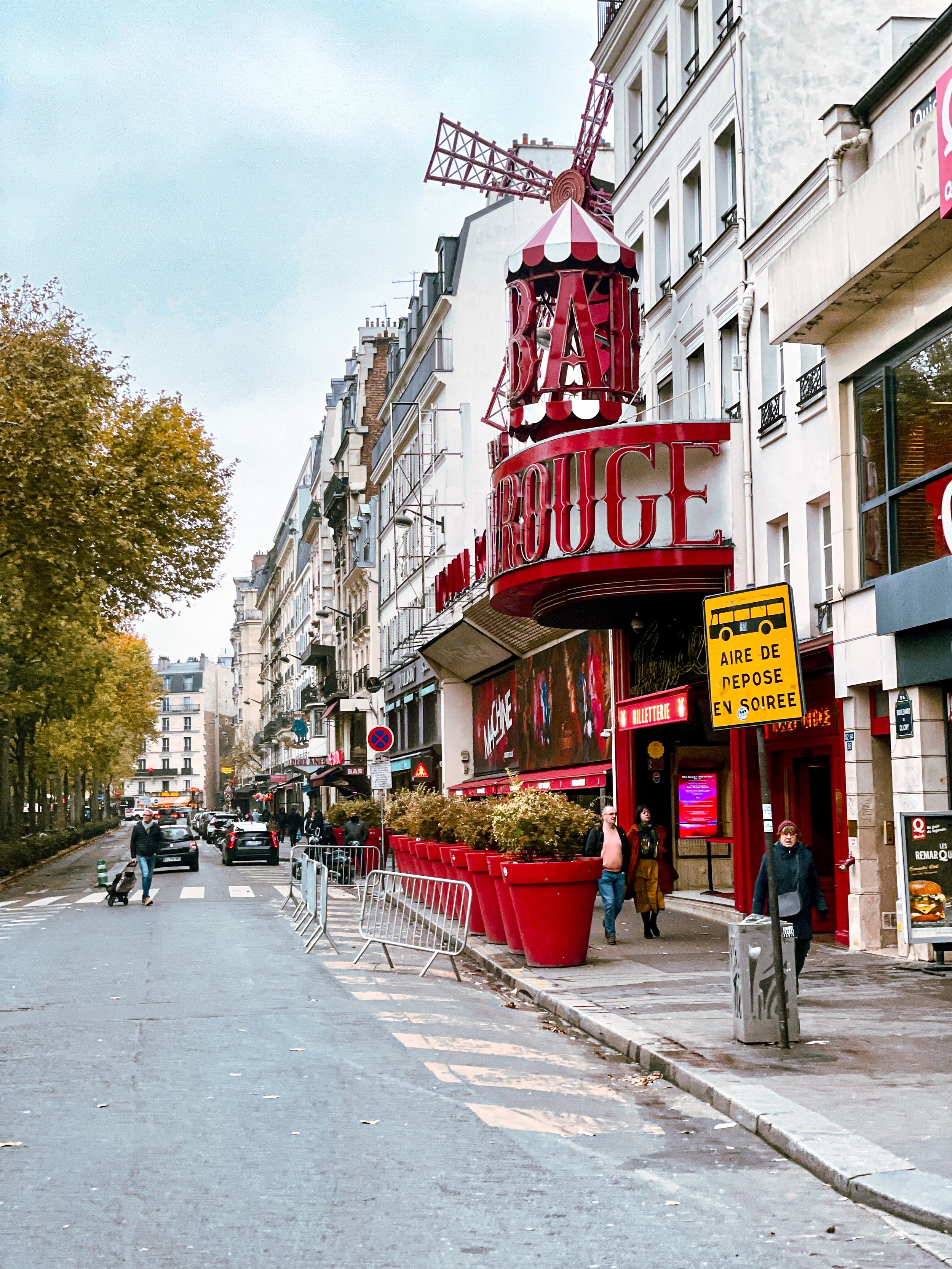
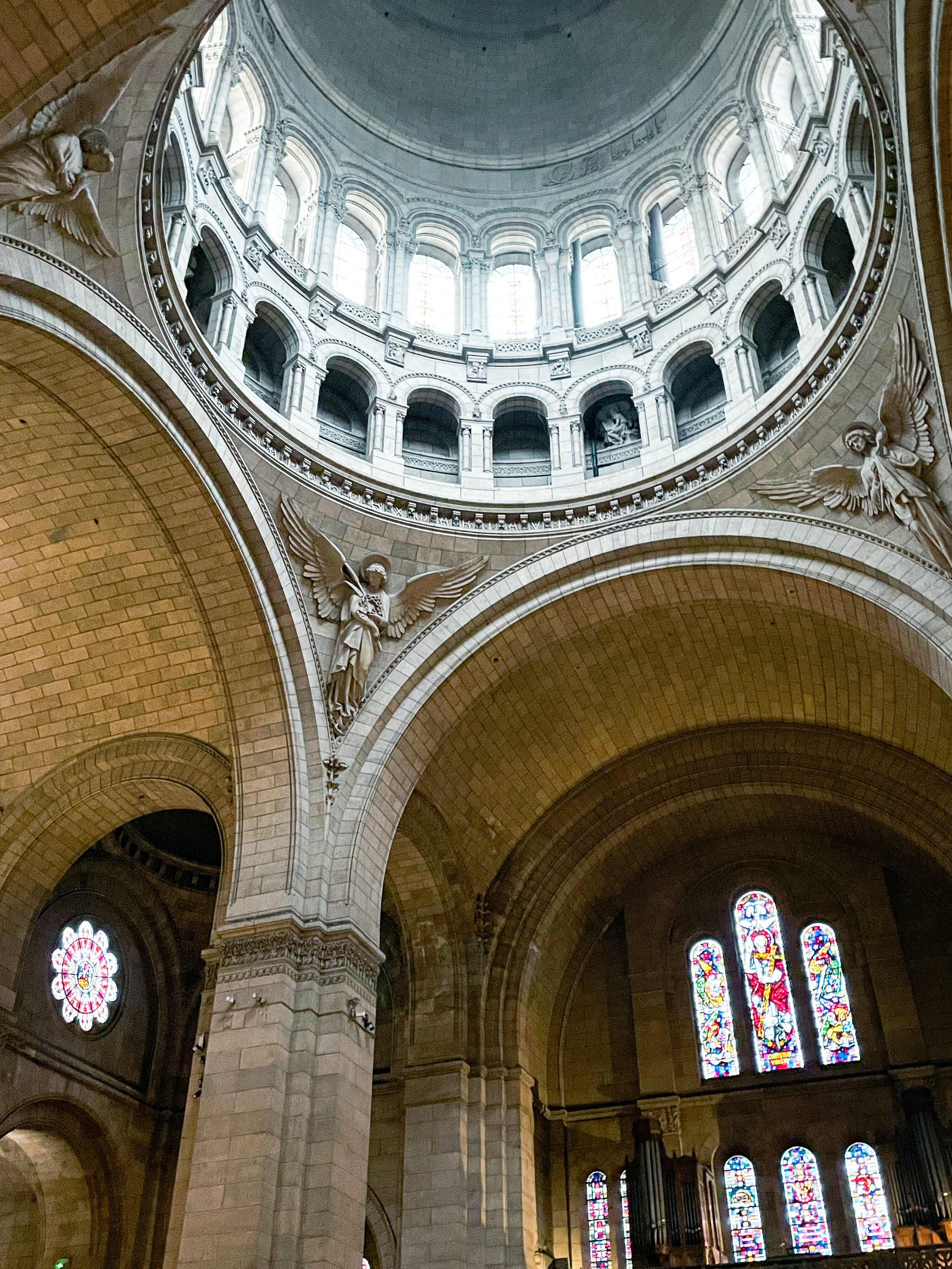

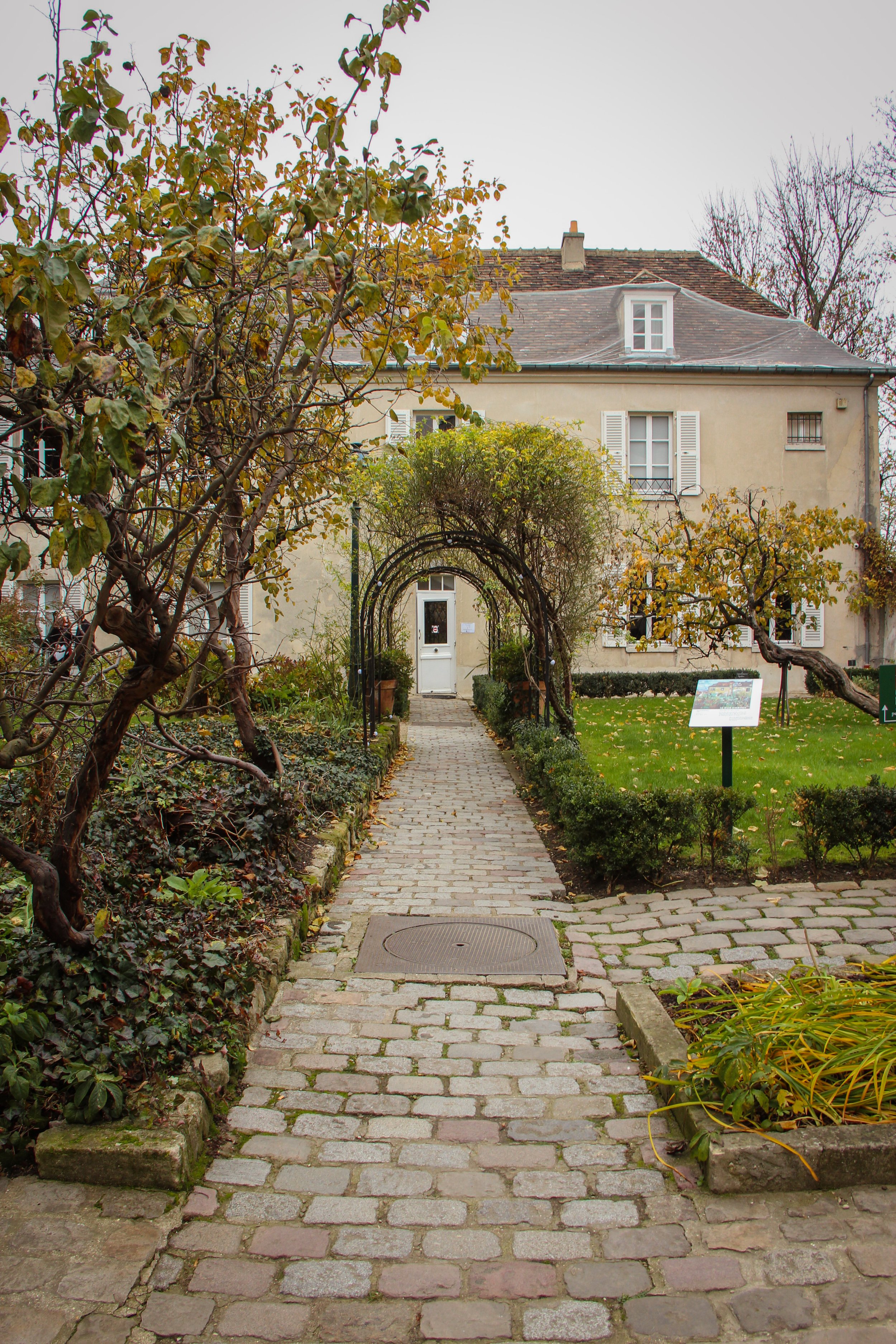
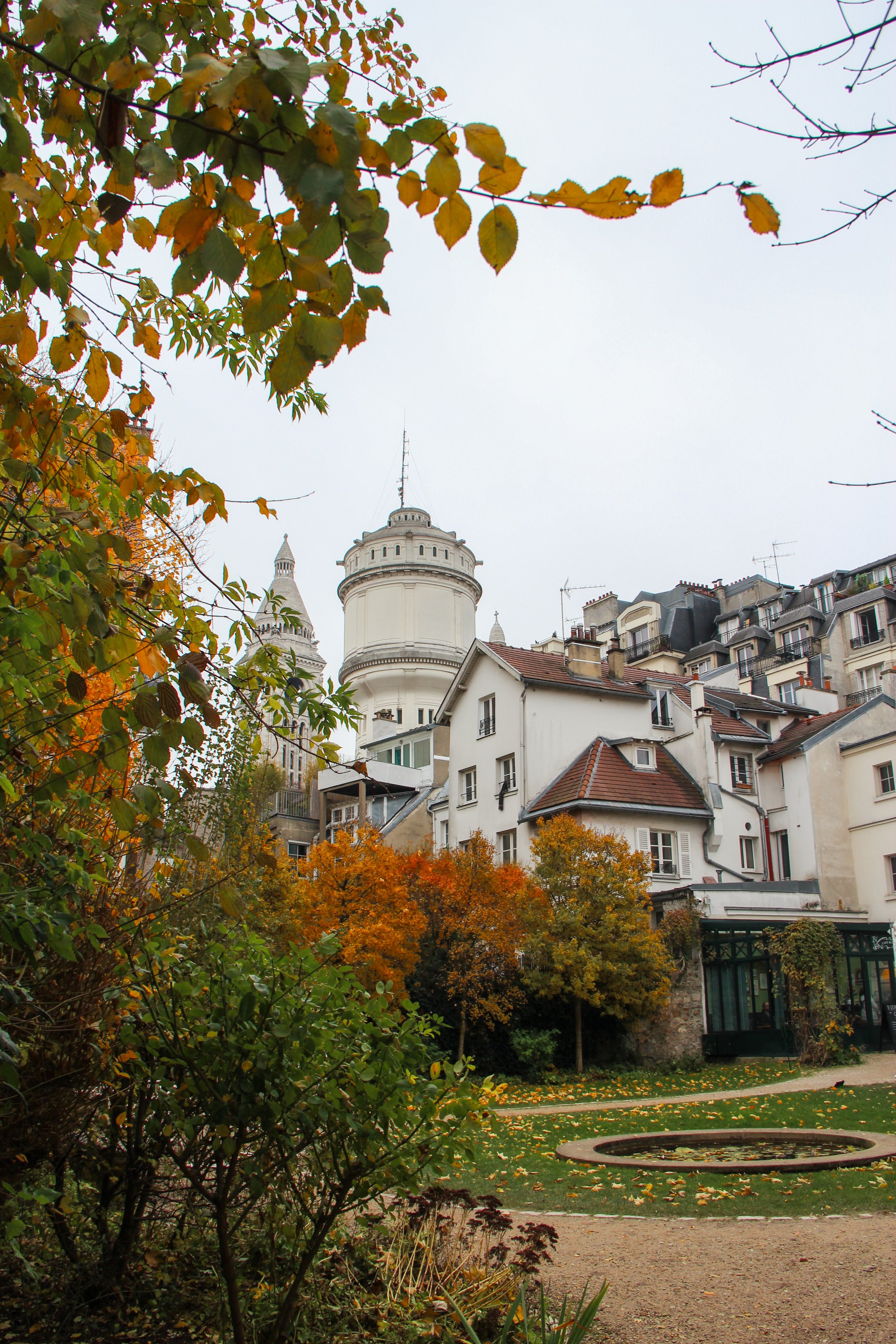


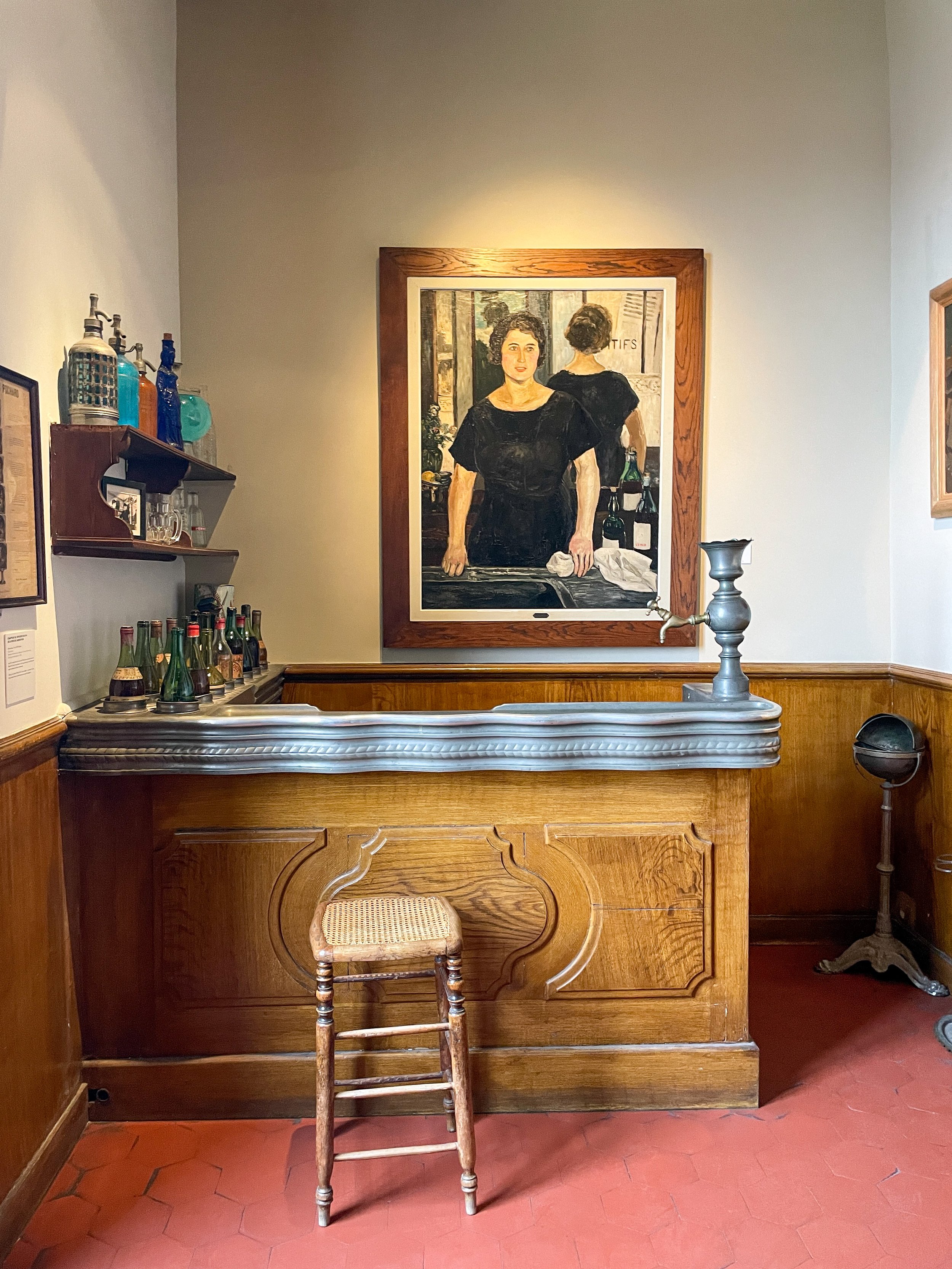
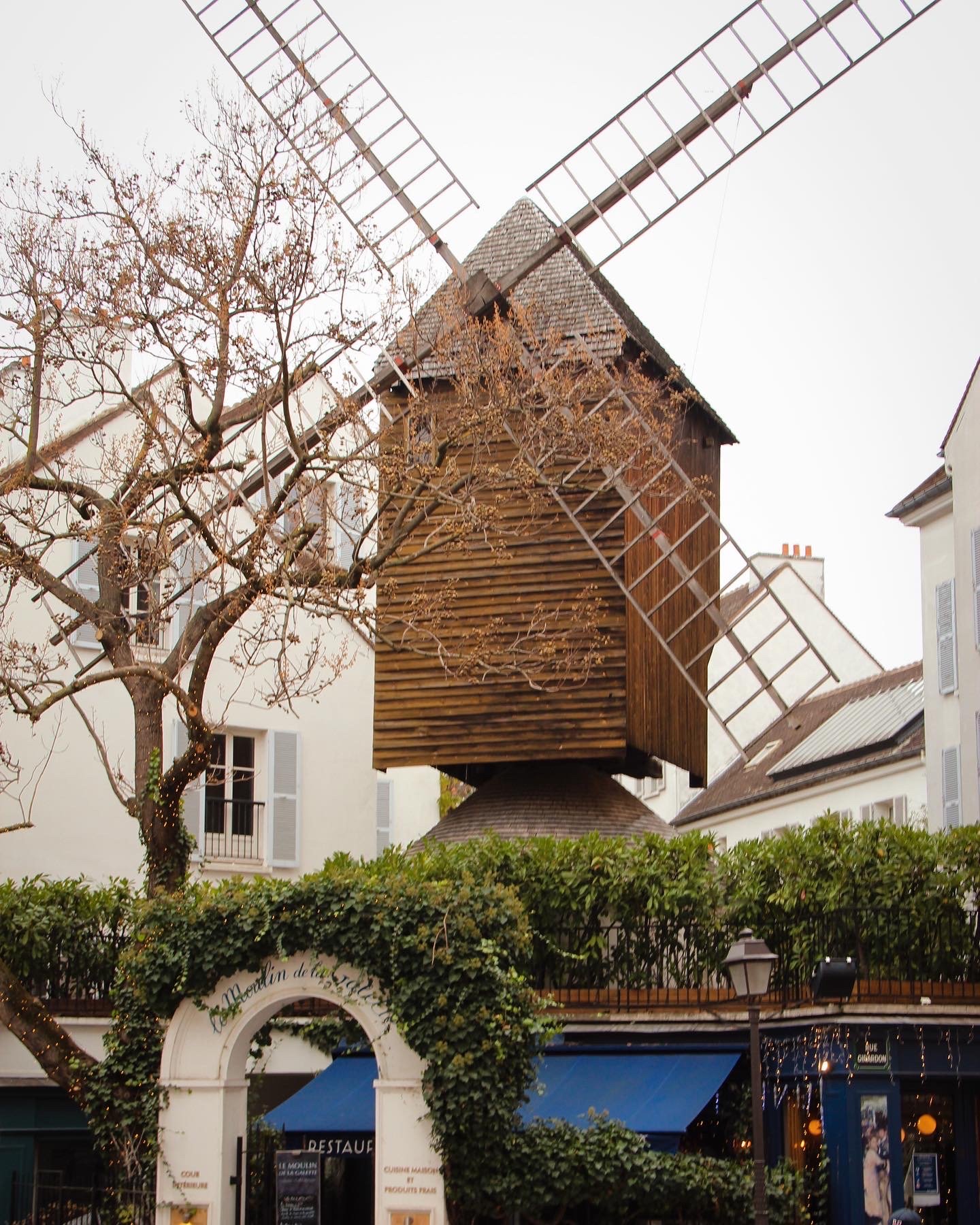
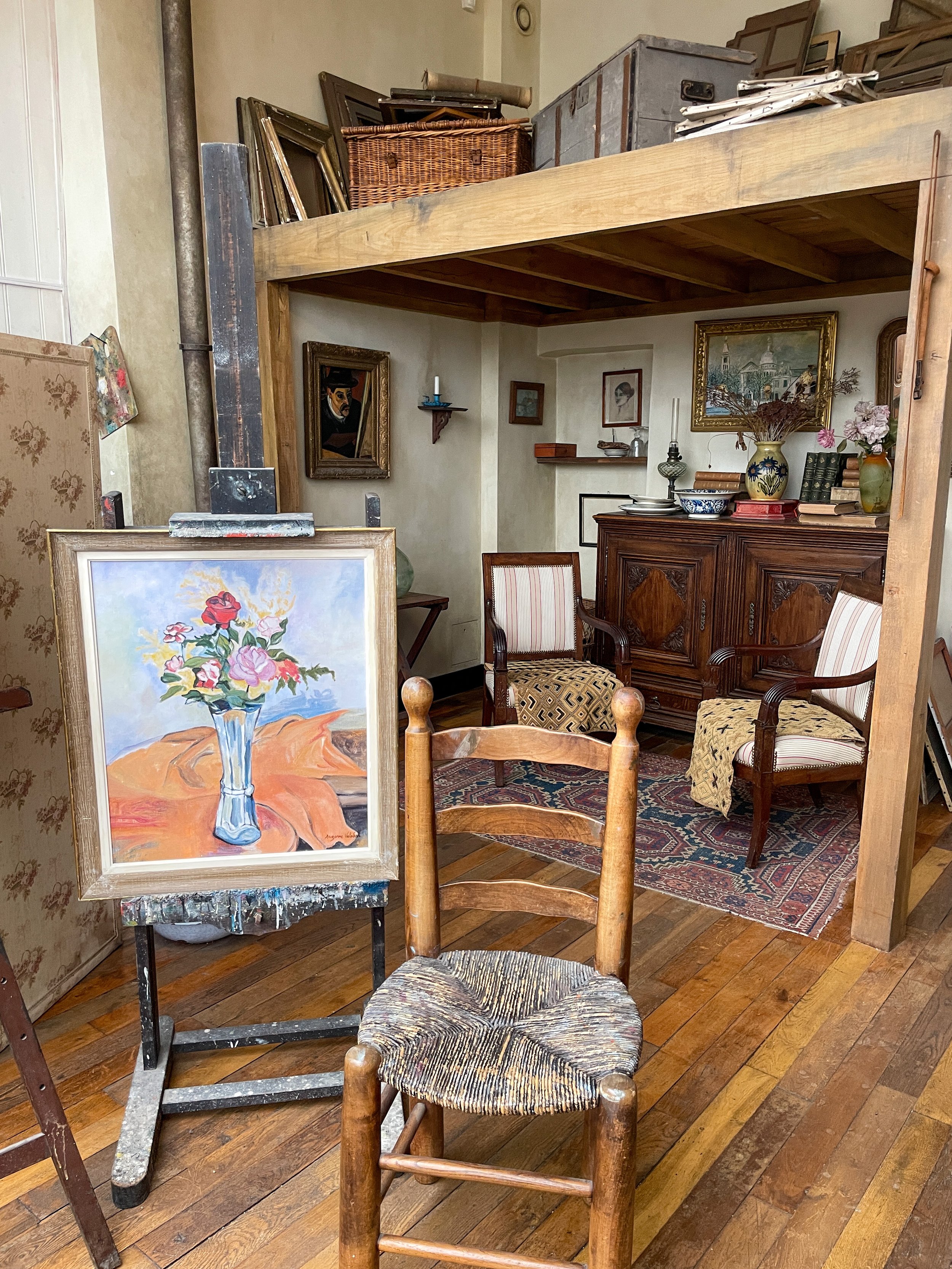
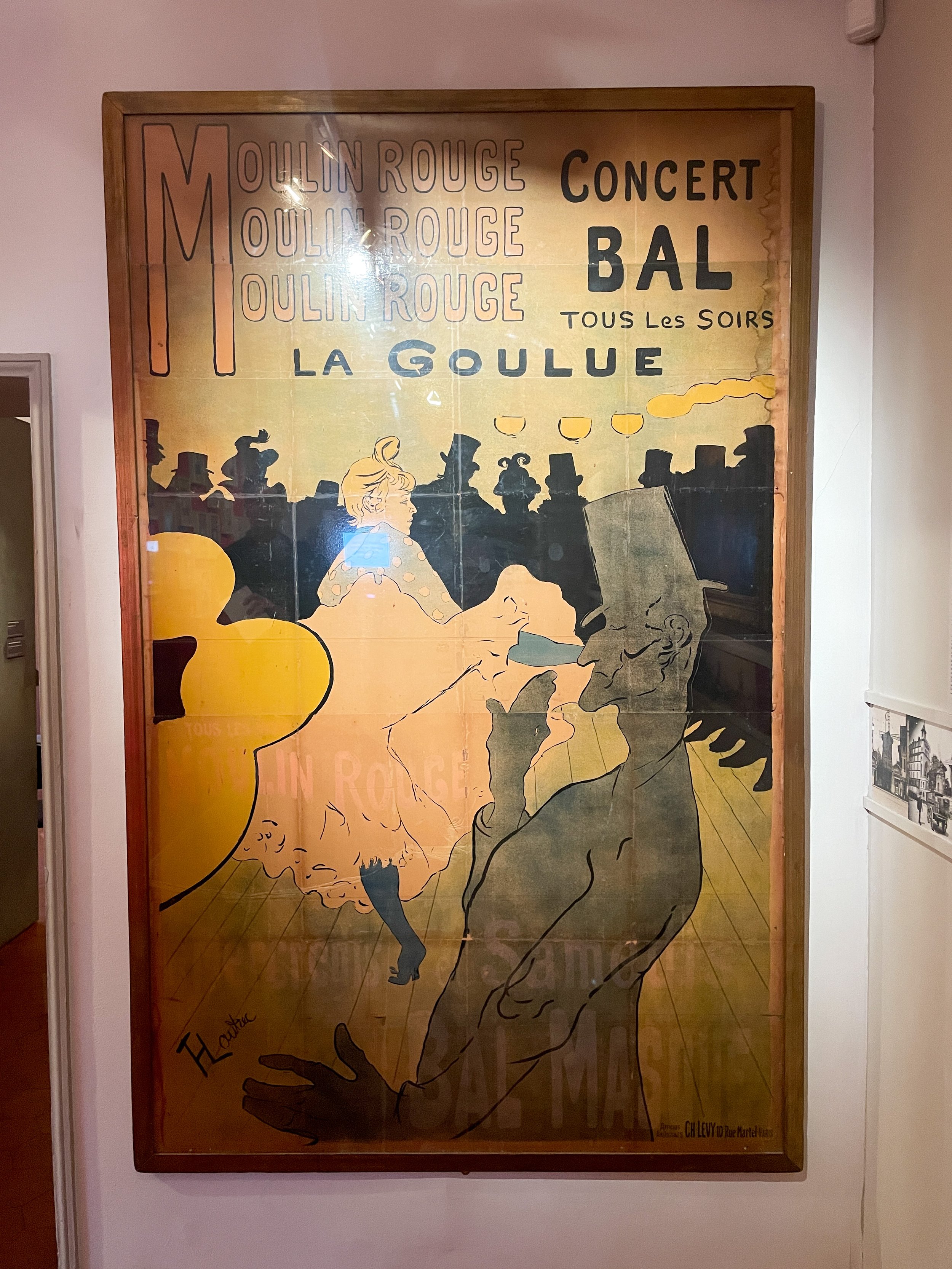
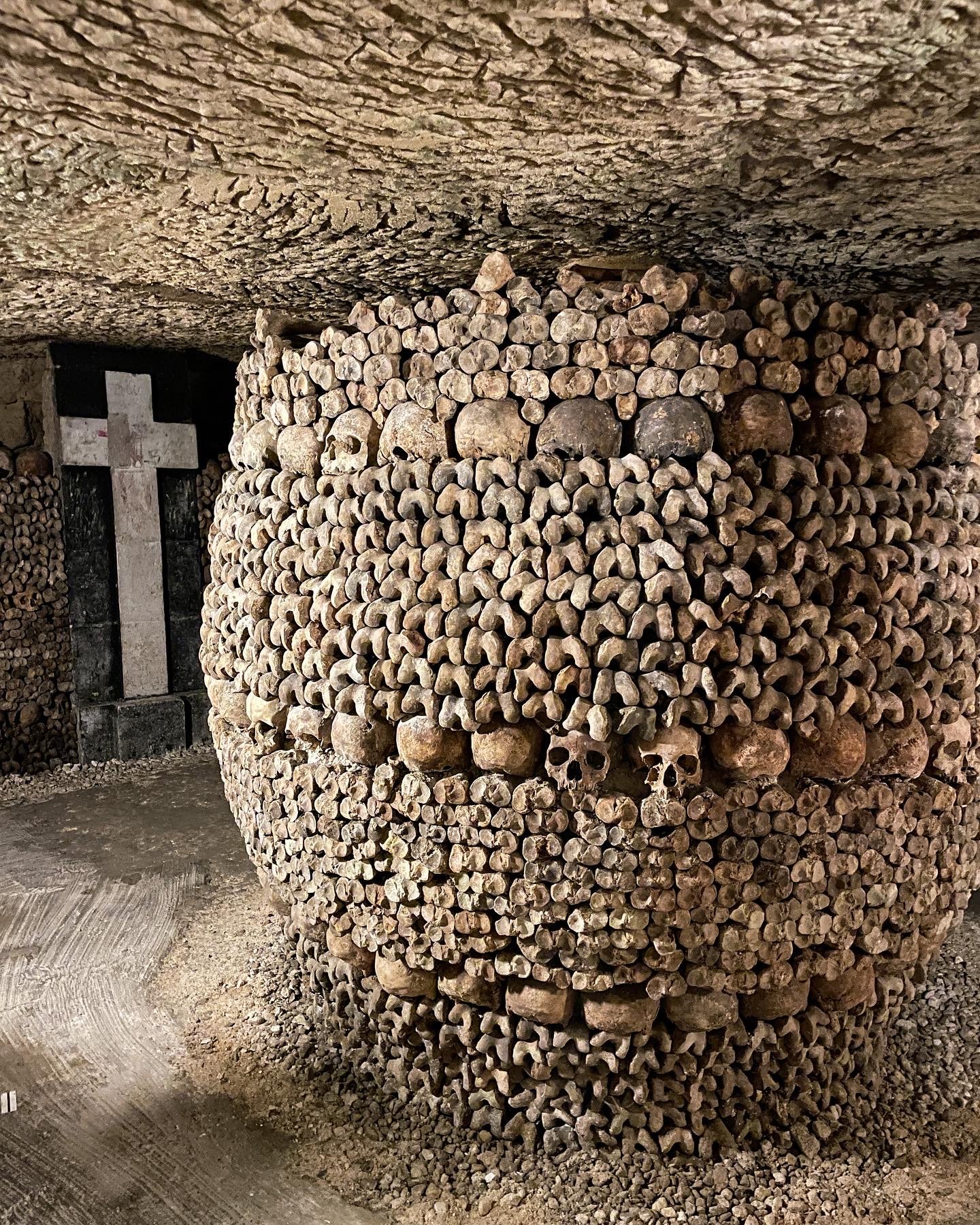
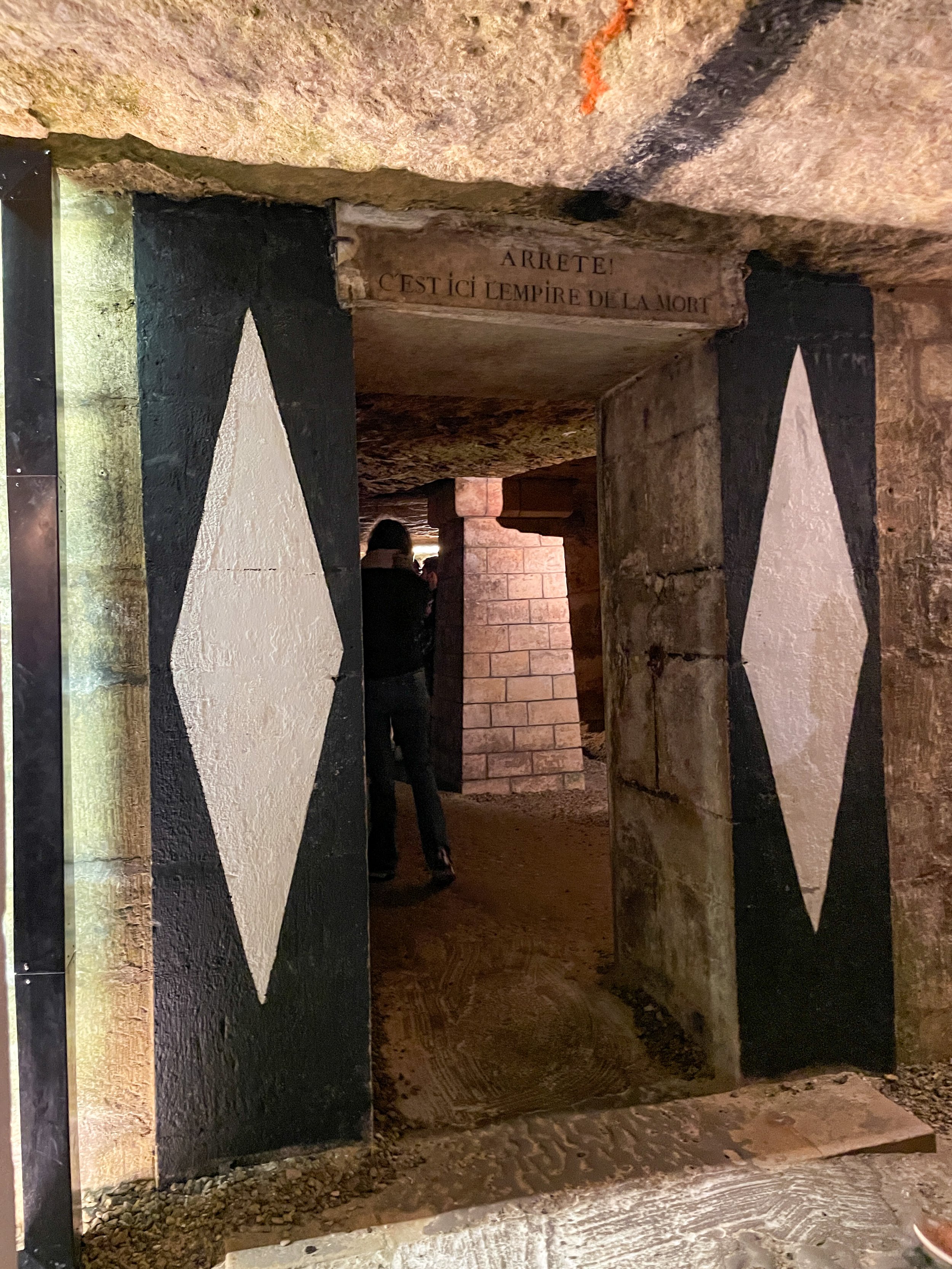
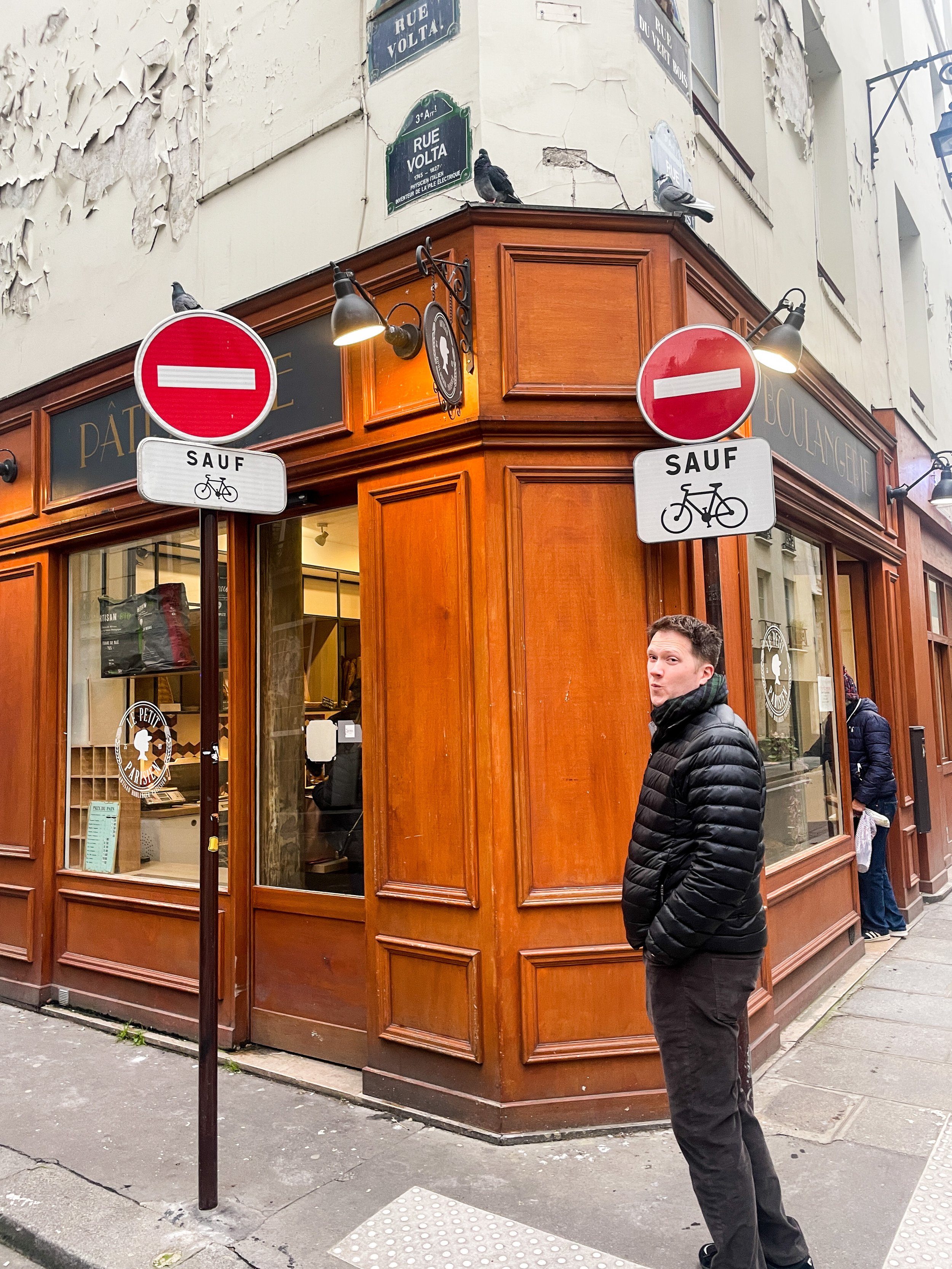
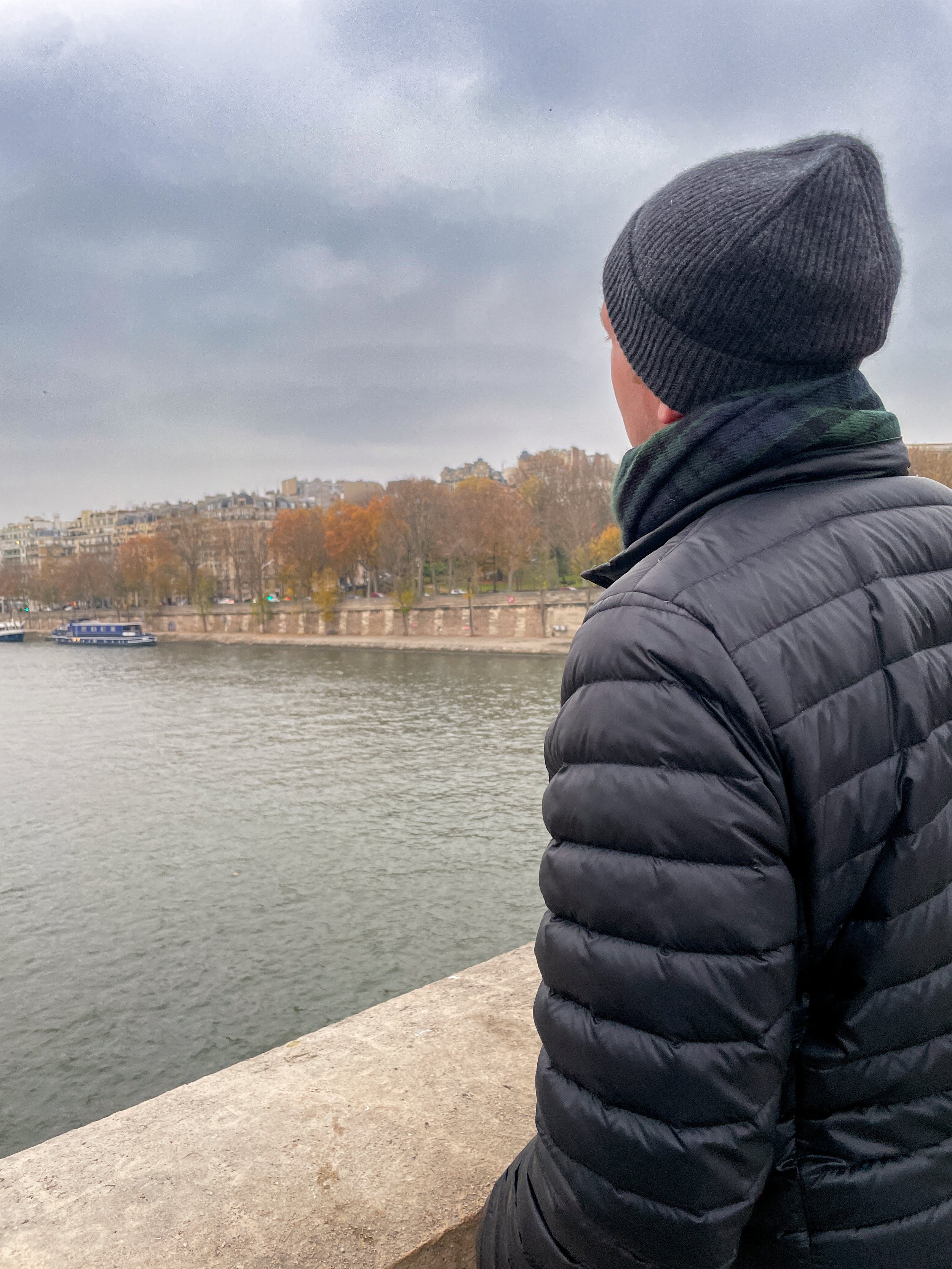
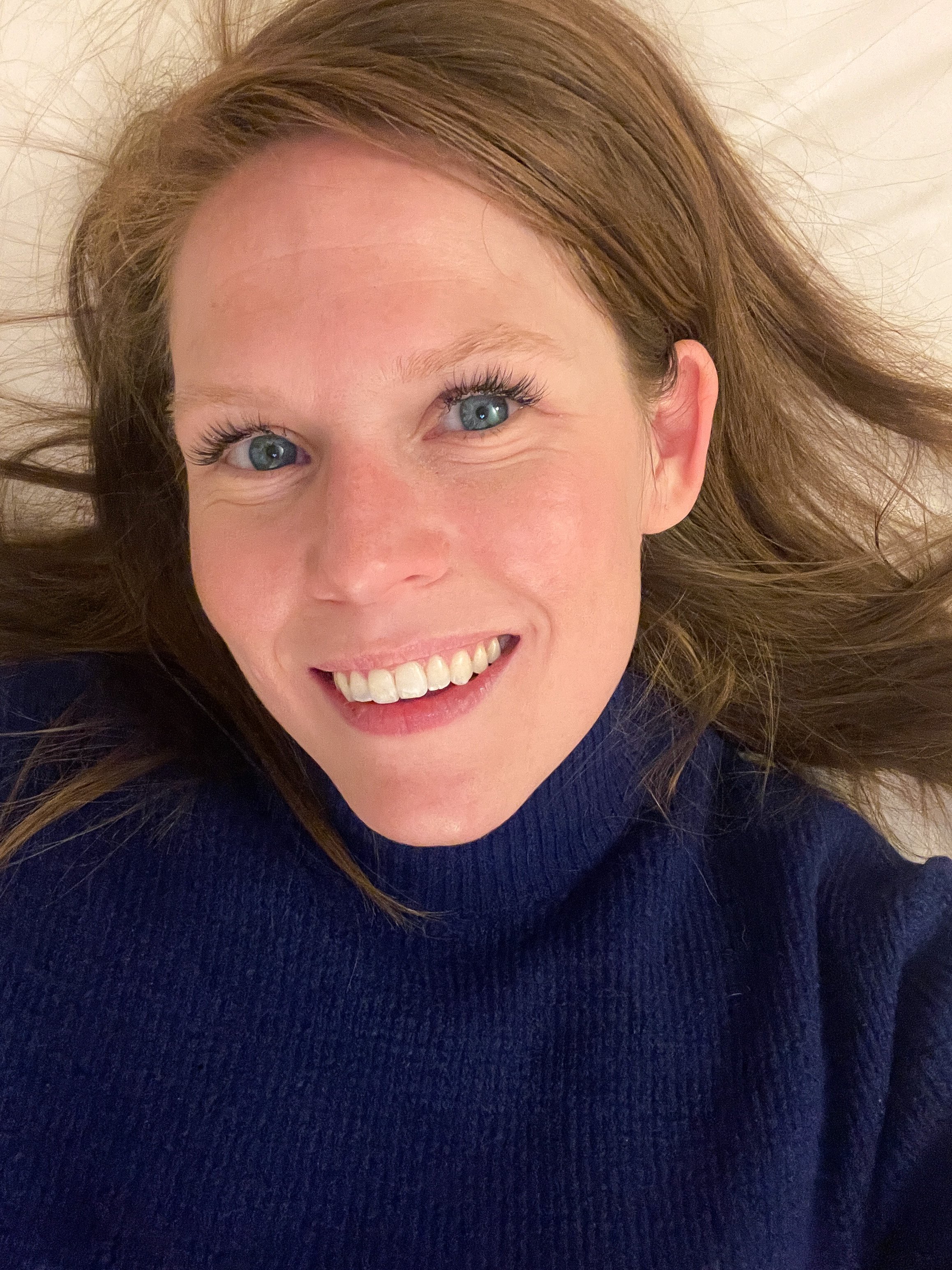
Monday (Day Three)
8:30 am: Head to Louvre
9:00 am: 12:30 - Louvre Museum - Reservation made.
1:00 pm: Lunch
3:50-4:15 pm: Shakespeare and Co. Bookstore
4:20-4:45 pm: Walk around Notre Dame and the Left Bank
5:00-6:30 pm: Get ready for dinner
7:00 pm: Guy Savoy - Reservation
10:00 pm: One last wine at Magnum La Cave with a friend from the States
The Louvre Museum
Two-Sentence History: The Louvre Palace was originally built in the late 12th to 13th century under Philip II and was used as a fortress until 1546 when Francis I converted it into the primary residence of the French Kings. It was left to showcase the royal collection and other art when Louis XIV chose the Palace of Versailles for his household—but eventually, during the French Revolution, it was declared that the Louvre should be used as a museum to display France’s masterpieces.
Notes: To beat the rush, we arrived at the Louvre right after it opened and skipped the main entrance with the pyramids. Instead we took the metro to Palais Royal-Musée du Louvre, and used the underground Carrousel du Louvre entry. We waited for less than 15 minutes. (This was my husband’s research, and it saved us a significant amount of time.) There weren’t huge crowds of people at the museum the first hour of our visit, so we quickly found our way to the Mona Lisa and beat the long queue to snap a picture with this petite picture. We were also the only visitors touring Napoleon’s apartments—it was very surreal to stand alone in his cavernous, gilded chambers. This was my favorite part of our museum visit.
However, not all of our ideas were good ones: We’d planned to listen to the Rick Steve’s audioguide, as we’ve done many times before when traveling, while we walked the Louvre. But we couldn’t find where the tour began—it was an obscure room that even the guides had difficulty locating. Then, some of the art featured in Rick’s highlights tour had been moved, making the tour feel out-of-date and making us feel very confused (“This wall? No that wall! No actually… the next room.”) Still, his tours are free on Apple Podcasts, and they do an excellent job of explaining the context behind some of the world’s most well-known pieces of art. If you’re visiting Rome, don’t sleep on his 45-minute Sistine Chapel explainer.
The Louvre was both enjoyable and exhausting. We walked around, a bit haphazardly, from 9 am to 1 pm, and didn’t even scratch the surface of this gigantic collection. We’ll definitely visit again, and do a little more research into other must-sees. I’d already know I’d like to go back to the French Romanticism and Neoclassicism section (Rooms 75 to 77). We also totally missed the Egyptian wing as well as some Rembrandt and Vermeer masterpieces. But, alas, I got hungry.
Walking along the left bank
After the Louvre, we didn’t have specific plans until diner. So we wandered the Left Bank and popped into Cafe Latin for lunch—a very acceptable, albeit random pick with a nice steak tartare and house wine. We walked by the Shakespeare and Co. Bookstore, but there was a very long line to enter and I didn’t want to stop exploring the streets on a sunny day. Notre Dame Cathedral was the next stop. It was sad to see the destruction from the fire, but it was still an incredible structure to behold. I briefly started singing “Out There” to Ryan, but apparently he wasn’t a Hunchback super fan.
We likely could have fit another Museum into our schedule between lunch and dinner, but it was a Monday so many were closed—and we weren’t sure how tired we’d be after the Louvre extravaganza. I ended up walking intro grocery stores and pharmacies in Le Marais (always interesting) while Ryan took a nap.
Guy savoy
My birthday gift was a fancy meal in France, and Guy Savoy (pronounced Ghee Sav-wah) was such a delight. The restaurant is situated on the Left Bank with a view of the Seine and separated into six different salons. We dined in the Vert Galant dining room. Its description reads, “Because that old charmer King Henry prancing on the Pont Neuf remains in the hearts of all those who love life,” perhaps in reference to an equestrian statue of the king on the bridge, right outside of the restaurant. We opted not to do the tasting menu to be (slightly) financially savvy. Instead we each selected an appetizer, a main entree, and dessert.
Here, my friends, is where I ate the best bread in Paris. I have not been able to forget the artichoke truffle soup and truffled mushroom brioche served with truffle butter. Every aspect of this dish was incredible—but the bread? While devouring the fluffy, buttery, earth-enhanced layers, I made a noise that likely embarrassed Ryan. The waiter asked if I’d like another one, and I almost cried with joy, greedily accepting my golden, glutenous treasure. The scene repeated itself; the waiter came back with another basket of brioches and asked if I’d like a third. “Cruel man!” I screamed, tears streaming from my eyes. “Do not tempt me any further! I will fill up on your bounty and be unable to imbibe in the rest of this fancy fare!” OK—that last part didn’t happen… Instead, I gave him my most mournful eyes and said it was wise I resist.
Other highlights included the white burgundy we shared with our meal, the dry ice-cooked salmon made table side, and the Guinea fowl cooked three different ways. It was the perfect last supper in Paris.
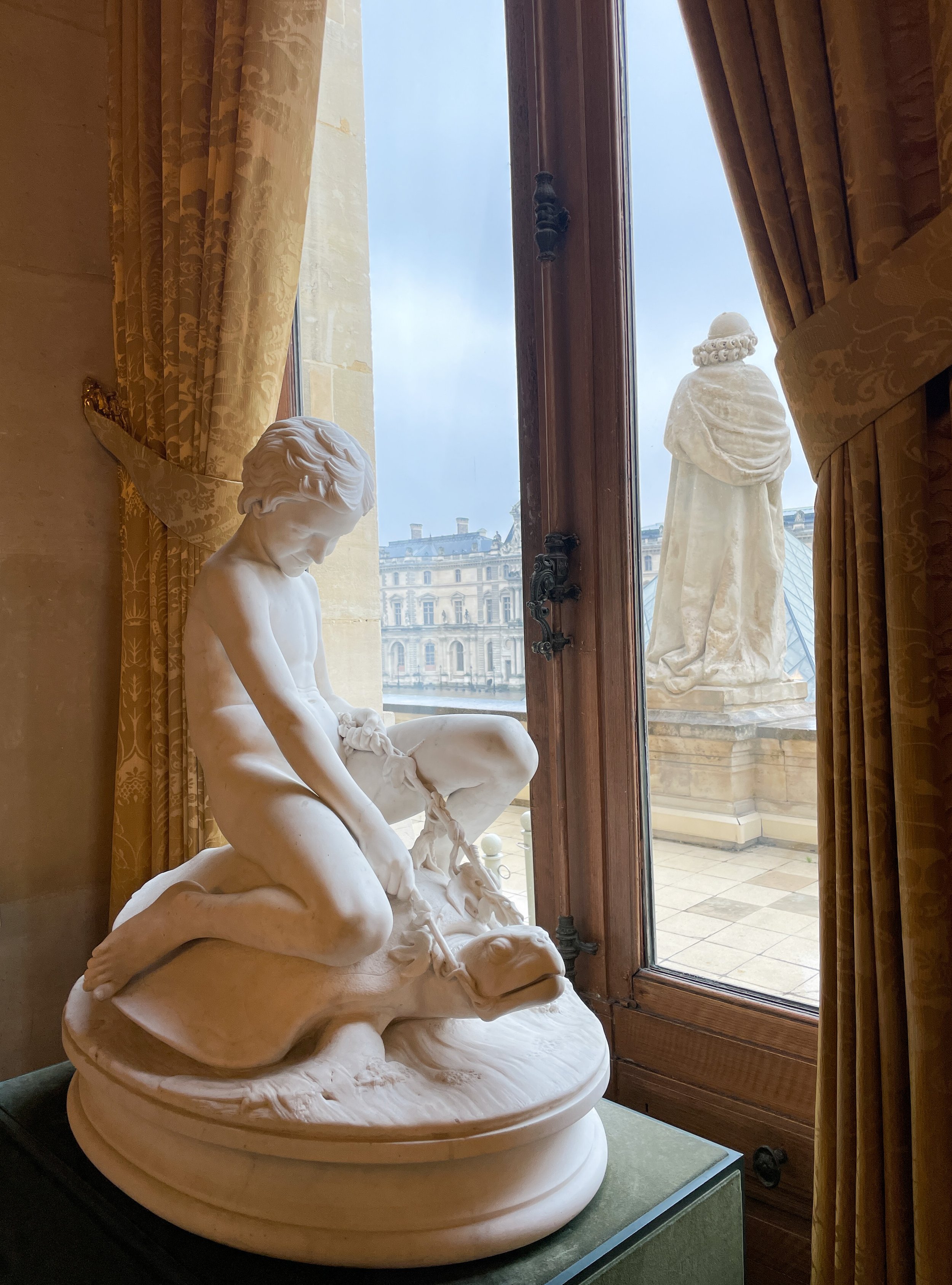
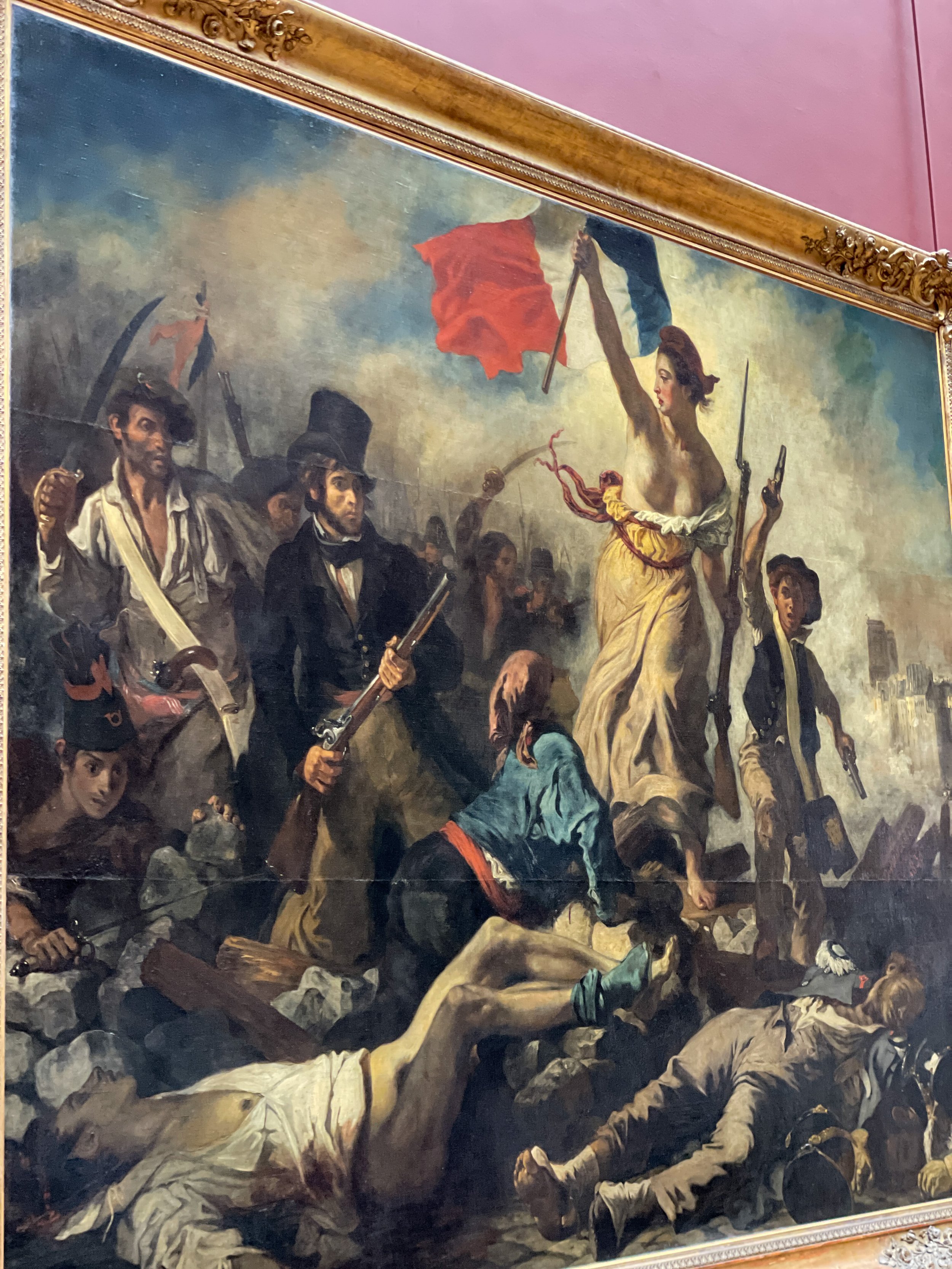
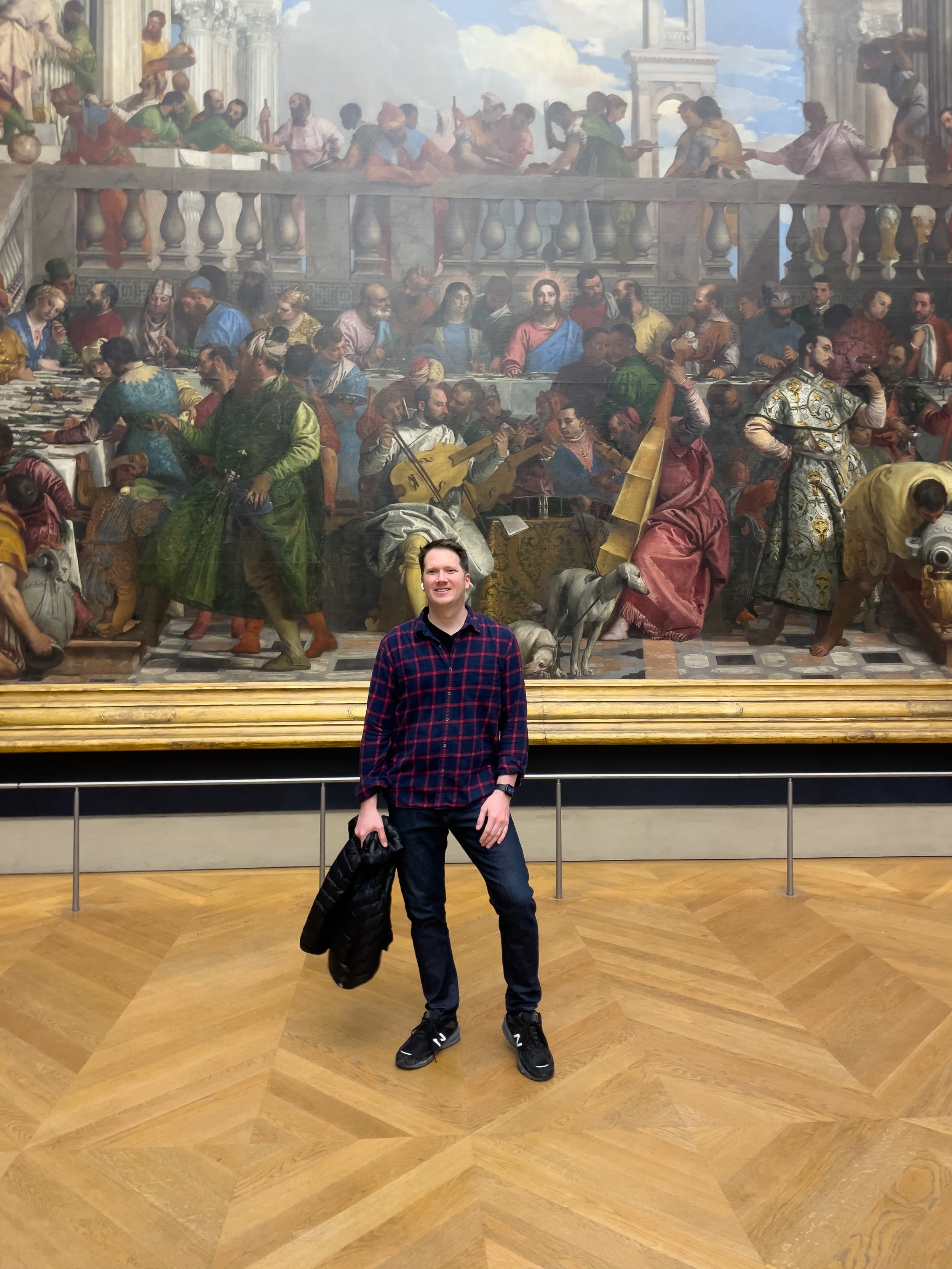

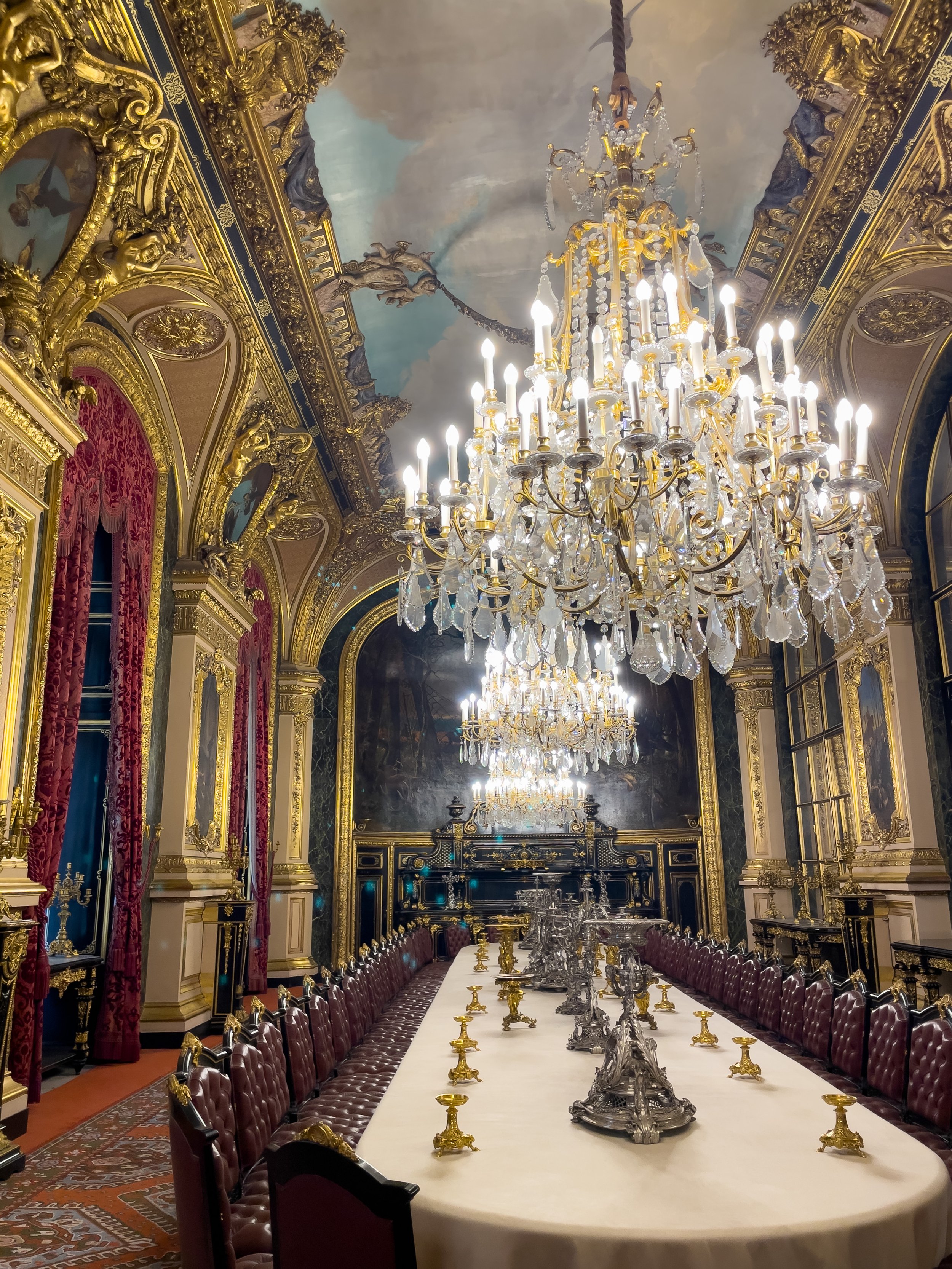
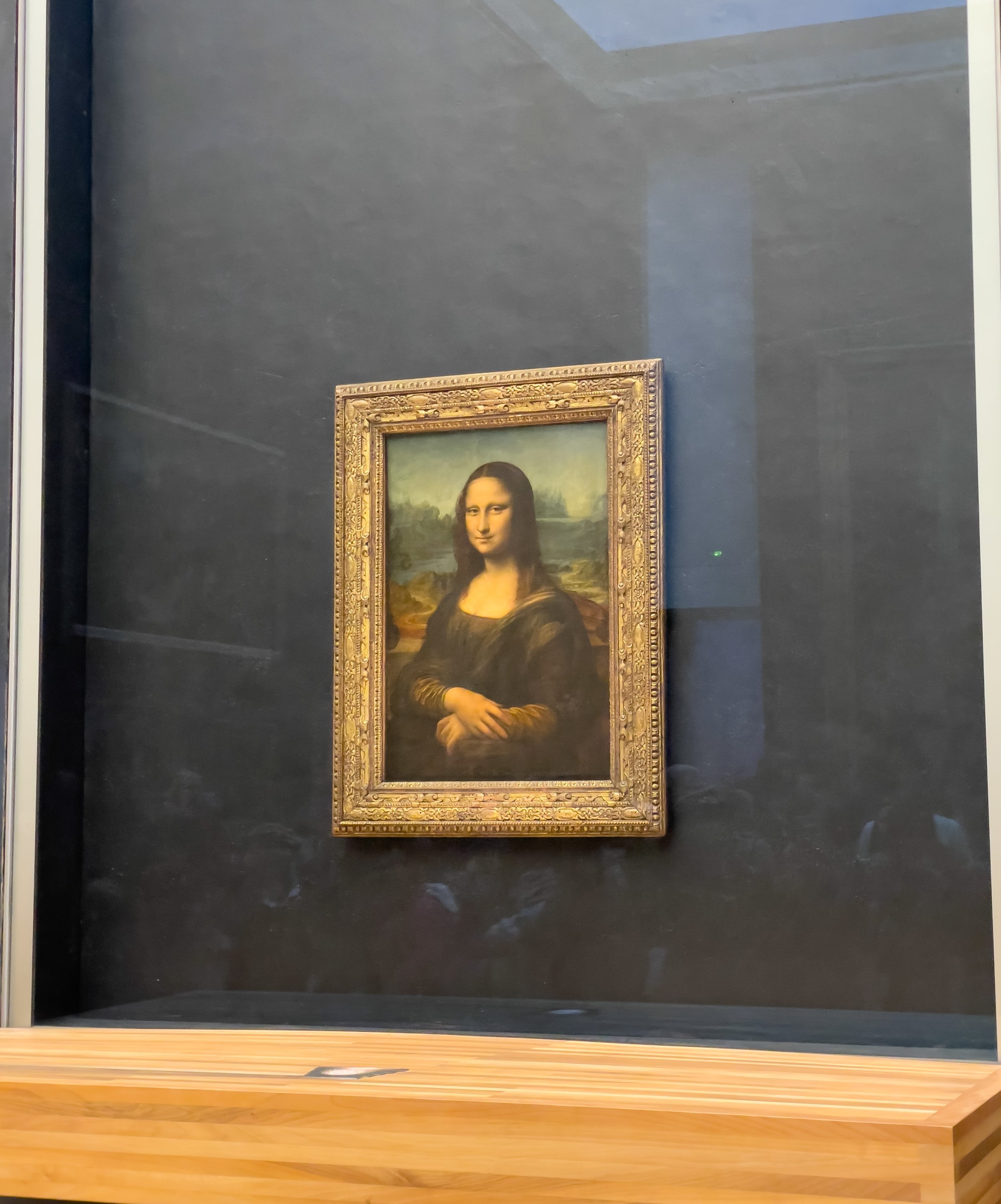
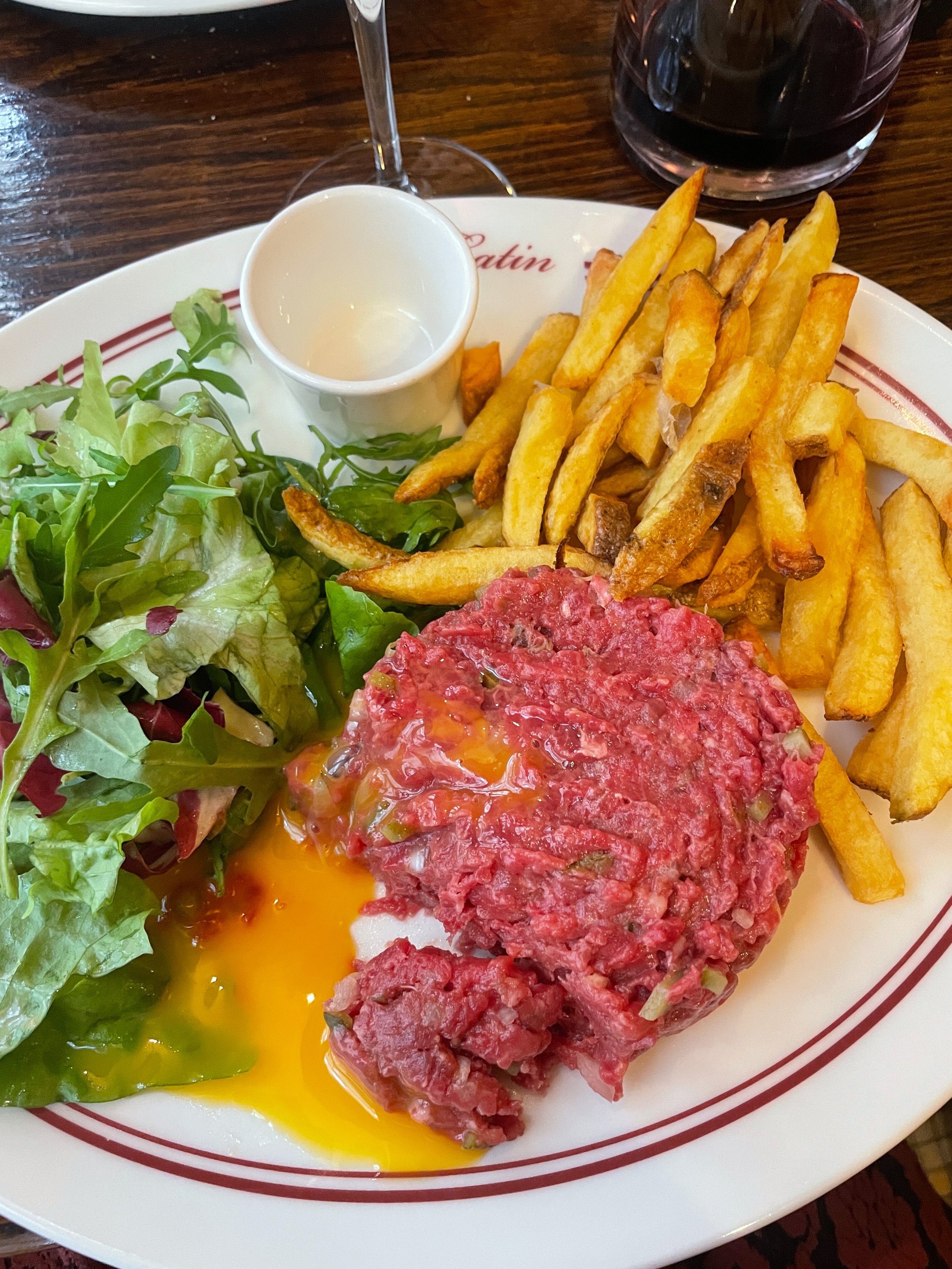
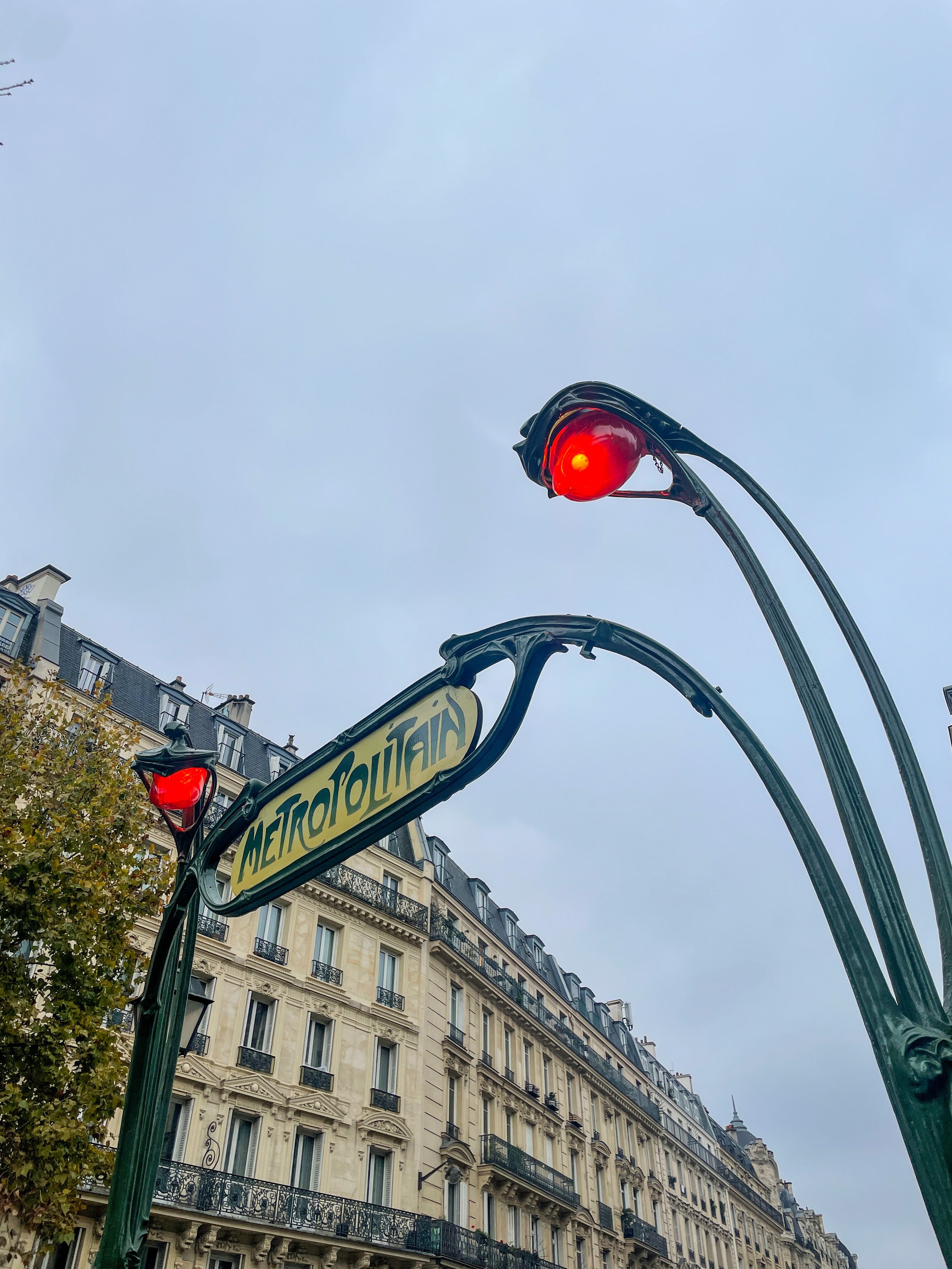
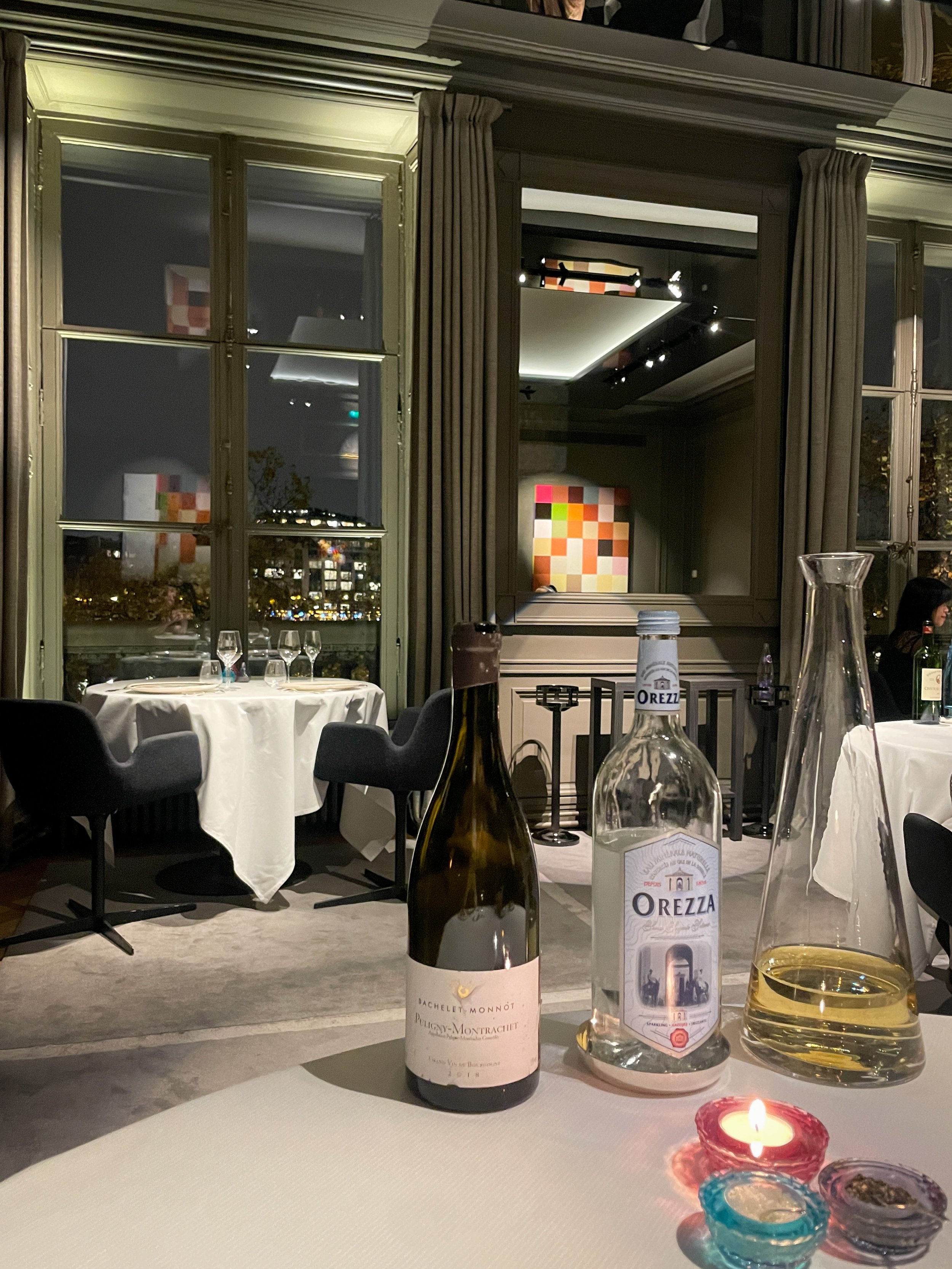
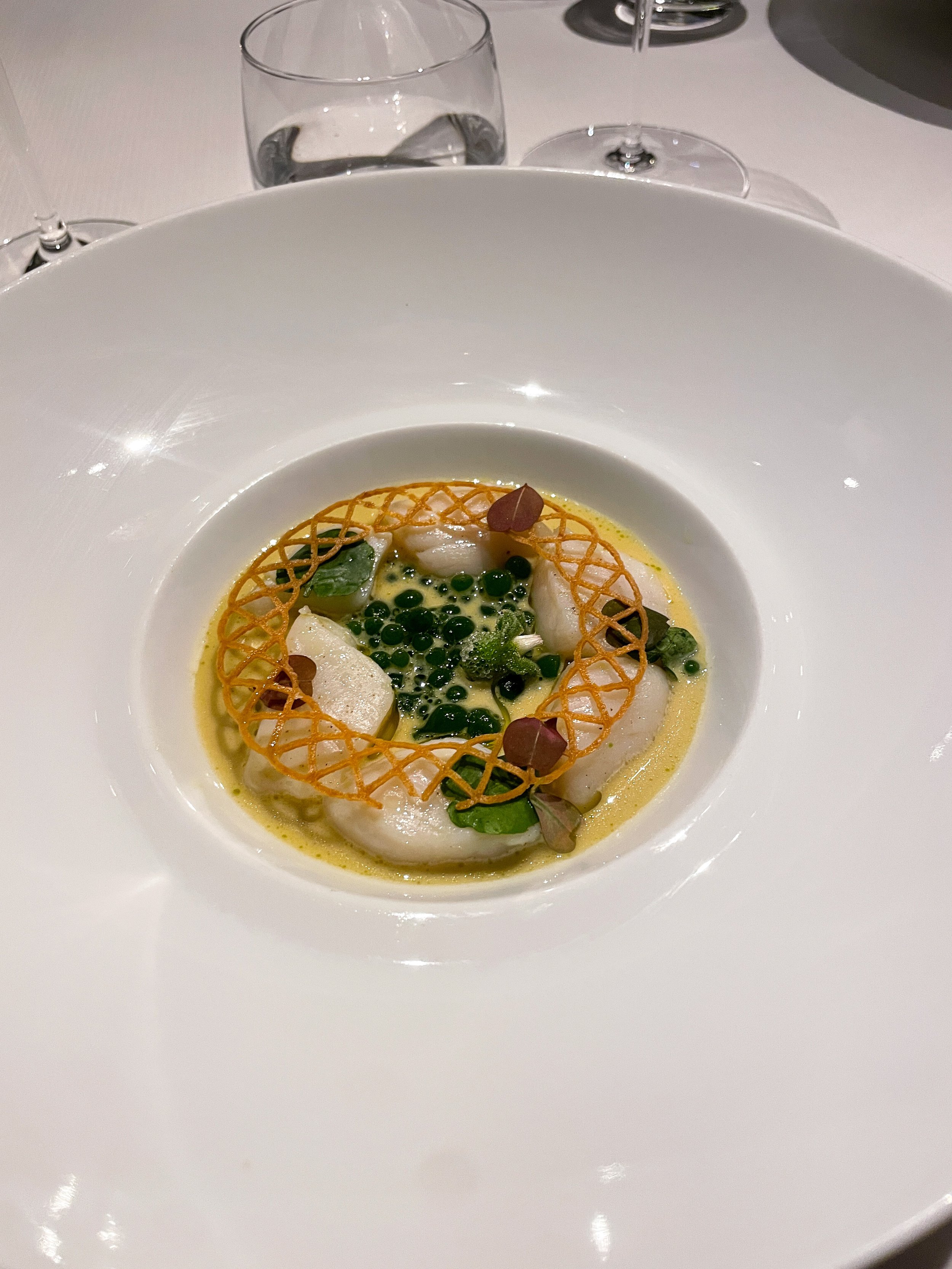
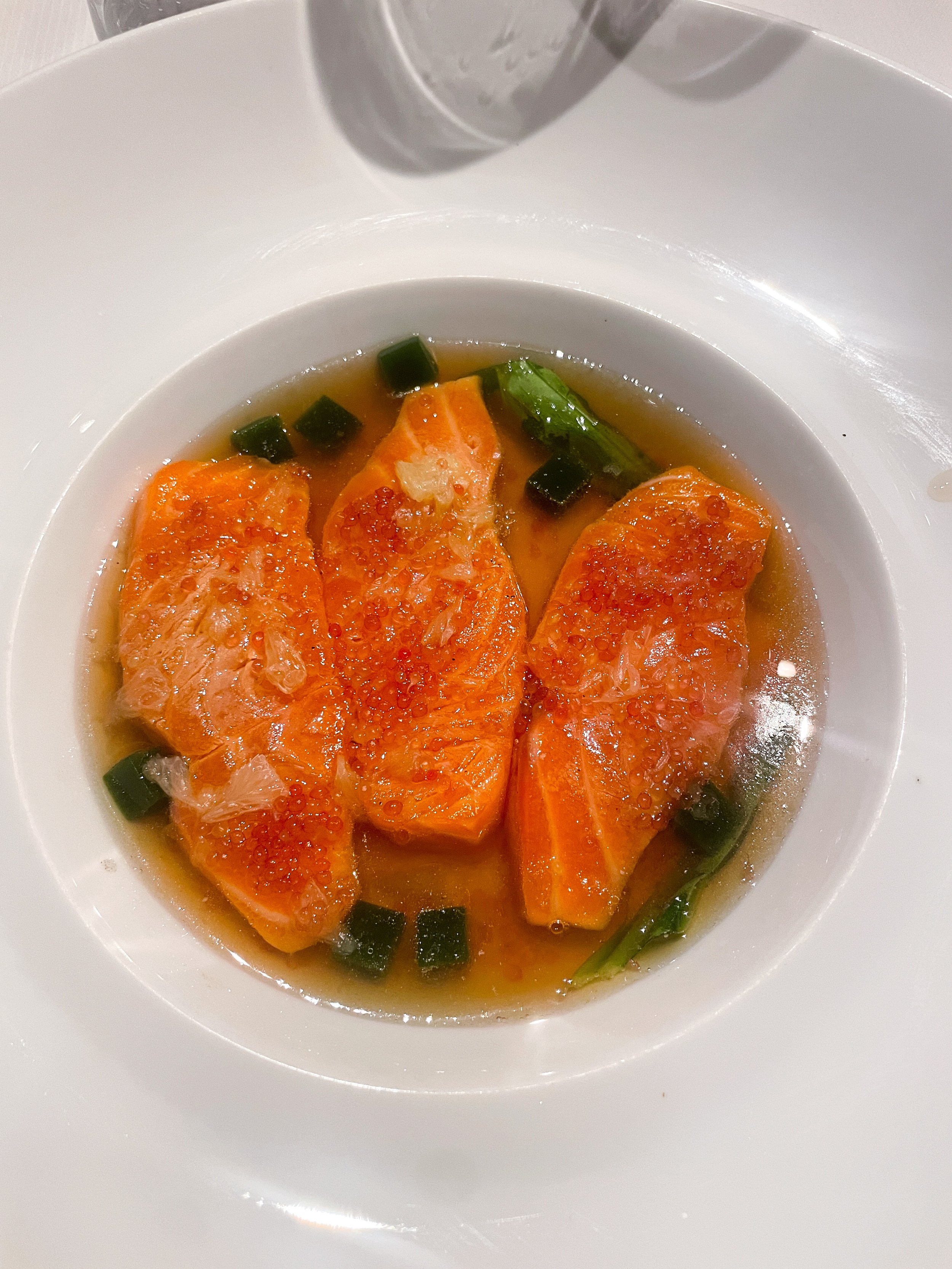
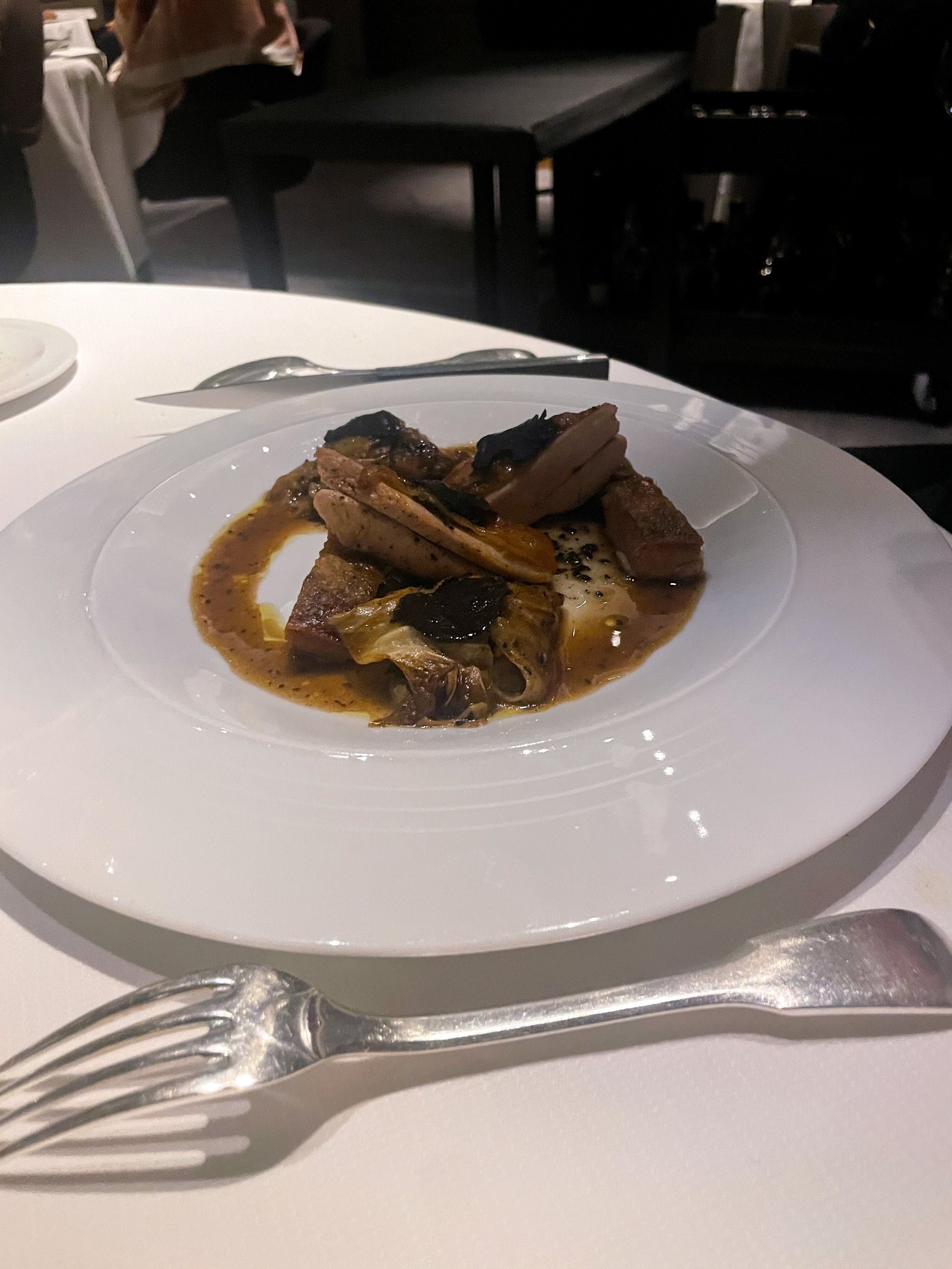
“I had forgotten how gently time passes in Paris. As lively as the city is, there’s a stillness to it, a peace that lures you in. In Paris, with a glass of wine in your hand, you can just be.”
